

Casalgrande Padana da sempre investe nella ricerca per il benessere dell’uomo
Casalgrande Padana has always invested in research to guarantee human well-being

Casalgrande Padana investit depuis toujours dans la recherche pour le bien-être de l’homme
Casalgrande Padana investiert seit jeher in die Forschung zum Wohle des Menschen
Bios Ceramics è la più avanzata ed esclusiva generazione di ceramiche bioattive per applicazioni architettoniche, certificate ed ecocompatibili, con caratteristiche antibatteriche, autopulenti e di riduzione degli agenti inquinanti.
La produzione si articola nell’ambito di due trattamenti estremamente specializzati e continuamente soggetti a migliorie prestazionali, Bios Self-Cleaning® e Bios Antibacterial® (vedi catalogo dedicato), in grado di rispondere a qualsiasi esigenza applicativa in interni ed esterni, in funzione delle specifiche condizioni di impiego. Una proposta trasversale e diversificata che in oltre vent’anni di sperimentazione ha permesso di soddisfare la creatività di progettisti e clienti in tutto il mondo, grazie alle ricercate finiture e ai diversi formati disponibili su tutta la gamma prodotti di Casalgrande Padana.
Bios Ceramics is the most advanced, exclusive generation of bioactive ceramics for certified, eco-compatible architectural applications, with antibacterial and self-cleaning properties and the ability to reduce pollutants.
The production is divided into two highly specialised treatments with continually improving performance: Bios Self-Cleaning® and Bios Antibacterial® (see the dedicated catalogue), able to respond to all kinds of requirements for applications indoors and outdoors, depending on the specific conditions of use. In over 20 years of experimentation, this diversified offer, available across a variety of products, has made it possible to meet the creative requirements of designers and customers all over the world, thanks to the sophisticated finishes and the different formats available throughout the entire Casalgrande Padana product range.
Bios Ceramics est la génération la plus avancée et la plus exclusive de céramiques bioactives pour des applications architecturales, certifiées et écocompatibles, offrant des caractéristiques antibactériennes, autonettoyantes et de réduction des agents polluants.
La production s’articule autour de deux traitements extrêmement spécialisés et soumis en permanence à des améliorations en termes de performances, Bios Self-Cleaning® et Bios Antibacterial® (voir catalogue dédié), capables de répondre à toute exigence d’application à l’intérieur comme à l’extérieur, en fonction des conditions d’utilisation spécifiques. Il s’agit d’une proposition transversale et diversifiée qui, au cours de plus de vingt années d’expérimentations, a permis de satisfaire la créativité des concepteurs et des clients dans le monde entier. Et ce, grâce aux finitions raffinées et aux différents formats disponibles sur toute la gamme des produits de Casalgrande Padana.
Bios Ceramics ist die modernste und exklusivste Generation bioaktiver Keramik für architektonische Anwendungen. Sie ist zertifiziert und umweltfreundlich und besitzt antibakterielle, selbstreinigende und schadstoffreduzierende Eigenschaften.
Die Produktreihe gliedert sich in zwei äußerst spezifische Behandlungen, die einer ständigen Leistungsverbesserung unterliegen: Bios Self-Cleaning® und Bios Antibacterial® (siehe gesonderter Katalog), mit denen entsprechend den jeweiligen Einsatzbedingungen alle erforderlichen Anwendungen im Innen- und Außenbereich erfüllt werden können. Dank der hochwertigen Oberflächenausführungen und der verschiedenen Größen, die für die gesamte Produktpalette von Casalgrande Padana zur Verfügung stehen, ist es in mehr als zwanzig Jahren des Experimentierens gelungen, mit dieser transversalen und vielfältigen Angebotspalette die Kreativität von Designern und Kunden auf der ganzen Welt zu befriedigen.
Casalgrande Ceramic Cloud Casalgrande, Italy Kengo Kuma
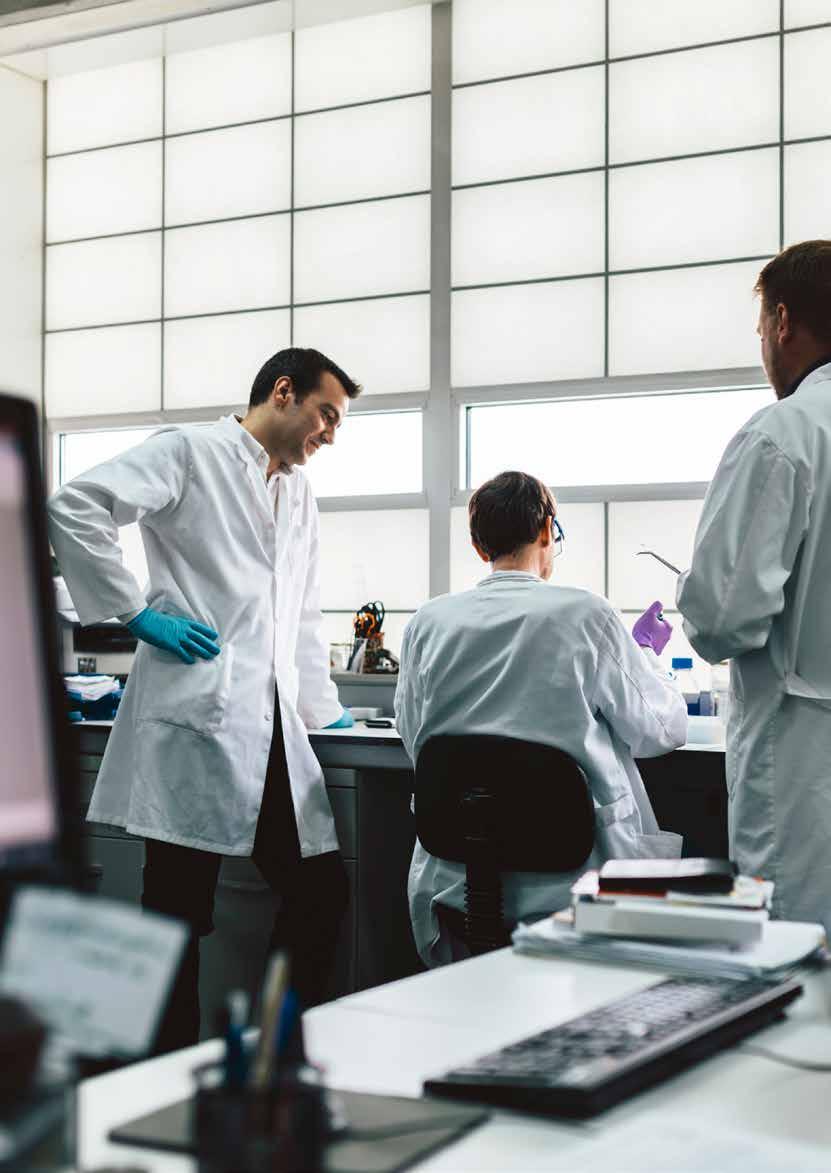
Un lungo percorso di ricerca
L’esperienza maturata in oltre sessant’anni di attività ha permesso a Casalgrande Padana e al suo Centro Ricerche di mettere a frutto un enorme bagaglio di conoscenze, affermandosi già vent’anni fa come leader mondiale nel mercato della ceramica per l’architettura. Un know-how e una filosofia operativa che ha consentito di esplorare nuovi percorsi nel campo delle ceramiche bioattive, sperimentando soluzioni tecnologiche all’avanguardia in partnership con importanti realtà a livello internazionale, come con il gruppo giapponese TOTO, leader assoluto nel settore dei prodotti sanitari e pioniere nella tecnologia fotocatalitica con il marchio Hydrotect®. Programmi di ricerca autonomi vengono costantemente promossi da Casalgrande Padana, in collaborazione con centri di ricerca esterni e diverse università italiane, in particolare con il Dipartimento di Scienze Biomediche, sezione di Microbiologia dell’Università di Modena e Reggio Emilia, e con il Dipartimento di Farmacia e Biotecnologie dell’Università di Bologna.
A lengthy research process
The experience gained in over 60 years in the business has allowed Casalgrande Padana and its Research Centre to make good use of a huge knowledge base, which had already earned the company a leading position in the ceramics for architecture market 20 years ago. This knowhow and operating philosophy have allowed us to explore new avenues in the field of bioactive ceramics, experimenting with leading-edge technological solutions with important international partners, such as the Japanese group TOTO, the undisputed leader in the sanitary ware sector and a pioneer of photocatalytic technology with the Hydrotect® brand. Independent research programmes are continually promoted by Casalgrande Padana, in collaboration with external research centres and with a number of Italian universities, in particular with the Microbiology section of the Biomedical Sciences Department of the University of Modena and Reggio Emilia, and with the Pharmacy and Biotechnologies Department of the University of Bologna.
Un long parcours de recherche
L’expérience acquise au cours de plus de soixante années d’activité a permis à Casalgrande Padana et à son Centre de Recherches de faire fructifier un énorme bagage de connaissances et de s’affirmer depuis vingt ans déjà comme le leader mondial sur le marché de la céramique destinée à l’architecture. Un savoir-faire et une philosophie opérationnelle qui ont permis d’explorer de nouvelles voies dans le domaine des céramiques bioactives, en expérimentant des solutions technologiques à l’avantgarde en partenariat avec des entreprises importantes au niveau international, comme le groupe japonais TOTO, leader absolu dans le secteur des produits sanitaires et pionnier dans la technologie photocatalytique avec la marque Hydrotect®. Casalgrande Padana promeut en permanence des programmes de recherche indépendants en collaboration avec des centres de recherche externes et différentes universités italiennes, notamment avec la Division de microbiologie du Département de sciences biomédicales de l’Université de Modène et Reggio d’Émilie et avec le Département de Pharmacie et de Biotechnologies de l’Université de Bologne.
Ein langer Weg der Forschung
Aufgrund der in über sechzig Jahren gesammelten Erfahrung konnte Casalgrande Padana mit seinem Forschungszentrum einen enormen Wissensschatz aufbauen und sich bereits vor zwanzig Jahren als Weltmarktführer im Bereich der Baukeramik etablieren. Dieses Know-how im Einklang mit der Unternehmensphilosophie hat es ermöglicht, neue Wege im Bereich der bioaktiven Keramik zu beschreiten und in Zusammenarbeit mit bedeutenden internationalen Unternehmen, wie dem japanischen Konzern TOTO, dem absoluten Marktführer im sanitärtechnischen Bereich und Pionier der photokatalytischen Technologie mit der Marke Hydrotect®, mit modernsten technologischen Lösungen zu experimentieren. Casalgrande Padana unterstützt fortlaufend unabhängige Forschungsprogramme in Zusammenarbeit mit externen Forschungszentren und verschiedenen italienischen Universitäten, insbesondere mit dem Fachbereich Biomedizinische Wissenschaften, Abteilung Mikrobiologie der Universität Modena und Reggio Emilia, und mit dem Fachbereich Pharmazie und Biotechnologie der Universität Bologna.
2006
Casalgrande Padana studia una ceramica con un’anima ecologica, denominata Bios Ceramics, di cui presenta il suo primo prototipo.
Casalgrande Padana began studying a ceramic material with an ecological focus, named Bios Ceramics, and presented the first prototype.
Casalgrande Padana étudie une céramique à l’esprit écologique appelée Bios Ceramics, dont elle présente son premier prototype.
Casalgrande Padana entwickelt eine Keramik mit ökologischer Vision, die sogenannte Bios Ceramics, von der ein erster Prototyp vorgestellt wird.
Inaugurato il Creative Centre
Casalgrande Padana per il cui rivestimento di facciata sono state utilizzate ceramiche trattate con Bios Self-Cleaning®

Inauguration of the Casalgrande Padana Creative Centre, the façade of which was covered using ceramics treated with Bios Self-Cleaning® technology.

Inauguration du Creative Centre Casalgrande Padana dont la façade est revêtue de céramiques traitées avec Bios Self-Cleaning® Einweihung des Kreativzentrums Casalgrande Padana, für dessen Fassade mit Bios Self-Cleaning® behandelte Keramikfliesen verwendet wurden.
Casalgrande Padana è l’unica azienda italiana che con Bios Antibacterial® vince il premio Produkt des Jahres 2011, concorso promosso dall’autorevole Fliesen und Platten.
With Bios Antibacterial®, Casalgrande Padana was the only Italian company to win the Produkt des Jahres award for 2011, a contest organised by the authoritative Fliesen und Platten.
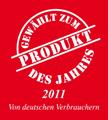
Casalgrande Padana est la seule entreprise italienne qui, avec Bios Antibacterial®, gagne le prix Produkt des Jahres 2011, concours organisé par la prestigieuse Fliesen und Platten.
Casalgrande Padana ist das einzige italienische Unternehmen, das mit Bios Antibacterial® die Auszeichnung „Produkt des Jahres 2011“ gewonnen hat. Dieser Wettbewerb wird von der Fachzeitschrift Fliesen und Platten ausgeschrieben.
Le ceramiche Bios Antibacterial® sono tra le protagoniste del libro inchiesta sull’innovazione e la sostenibilità “Green Italy”, scritto da Ermete Realacci, presidente onorario di Legambiente.
Bios Antibacterial® ceramics were featured in “Green Italy”, a book that looks into innovation and sustainability, written by Ermete Realacci, honorary Chairman of the Legambiente association.
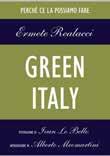
Les céramiques Bios Antibacterial® font partie des protagonistes du livre enquête sur l’innovation et la durabilité Green Italy, écrit par Ermete Realacci, président honoraire de Legambiente.
Die Bios Antibacterial®-Keramik gehört zu den Protagonisten des Buches über Innovation und Nachhaltigkeit „Green Italy“, verfasst von Ermete Realacci, Ehrenpräsidentin von Legambiente.
Rilasciato il certificato UNIMORE per l’attività antibatterica di Bios Antibacterial®

Issue of UNIMORE certification for the antibacterial activity of Bios Antibacterial® Délivrance du certificat UNIMORE pour l’activité antibactérienne de Bios Antibacterial® Für die antibakterielle Wirkung von Bios Antibacterial® wird ein UNIMORE-Zertifikat ausgestellt.
2007 2008 2013 2012
Prima applicazione di Bios Antibacterial® nel Centro di Medicina Rigenerativa Stefano Ferrari di Modena.
First application of Bios Antibacterial® in the Stefano Ferrari Regenerative Medicine Centre in Modena.
Première application de Bios Antibacterial® dans le Centre de Médecine régénérative Stefano Ferrari de Modène.
Erstmalige Verwendung von Bios Antibacterial® im Zentrum für Regenerative Medizin Stefano Ferrari in Modena.
Nuova partnership con l’azienda giapponese TOTO, leader assoluto nel settore dei coating fotocatalitici con il marchio Hydrotect® per la linea di piastrelle Bios Self-Cleaing®

New partnership between the Bios Self-Cleaning® tile range and the Japanese company TOTO, undisputed leader in the photocatalytic coating sector with the Hydrotect® brand.
Nouveau partenariat avec l’entreprise japonaise TOTO, leader absolu dans le secteur des revêtements photocatalytiques avec la marque Hydrotect® pour la ligne de dalles Bios Self-Cleaning®
Neue Partnerschaft mit dem japanischen Unternehmen TOTO, dem absoluten Marktführer im Bereich der photokatalytischen Beschichtungen mit der Marke Hydrotect® für die Fliesenlinie Bios Self-Cleaing®
Daniel Libeskind progetta per Casalgrande Padana Pinnacle, un’installazione rivestita con lastre Bios Self-Cleaning® progettata per Bologna Water Design.
For Casalgrande Padana, Daniel Libeskind designed Pinnacle, an installation covered with Bios Self-Cleaning® tiles, designed for Bologna Water Design.
Daniel Libeskind conçoit pour Casalgrande Padana Pinnacle, une installation revêtue de dalles Bios Self-Cleaning® conçue pour Bologna Water Design.
Daniel Libeskind entwirft für Casalgrande Padana Pinnacle, eine mit Bios SelfCleaning®-Platten verkleidete Installation, die für die Bologna Water Design entworfen wurde.
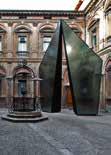
Bios Antibacterial® premiato all’AIT Innovation Award “Architecture and Building” di Essen e all’AIT Innovation Award “Architecture and Flooring” di Hannover.
Bios Antibacterial® won an AIT Innovation Award for “Architecture and Building” in Essen and an AIT Innovation Award for “Architecture and Flooring” in Hannover.

Bios Antibacterial® reçoit le Prix de l’innovation AIT « Architecture and Building » d’Essen et le Prix de l’innovation AIT « Architecture and Flooring » d’Hanovre.
Bios Antibacterial® wird mit dem AIT Innovationspreis „Architektur und Bauwesen“ in Essen und dem AIT Innovationspreis „Architektur und Bodenbelag“ in Hannover ausgezeichnet.
2011
Bios Antibacterial® è selezionato per l’ADI Design Index 2010, categoria “Design dei materiali e dei componenti”.
Bios Antibacterial® was selected for the ADI Design Index 2010, in the “Materials and Components” category.
Bios Antibacterial® est sélectionné pour l’ADI Design Index 2010, catégorie « Design des matériaux et des composants ».
Bios Antibacterial® wird für den ADI Design Index 2010, Kategorie „Design von Materialien und Komponenten“ ausgewählt.
Bios Self-Cleaning® è utilizzato dall’architetto Kengo Kuma per la realizzazione di due progetti site specific, ideati per la sede di Casalgrande Padana: Casalgrande Ceramic Cloud e Old House.
Bios Self-Cleaning® was used by the architect Kengo Kuma for two site-specific projects, conceived for the Casalgrande Padana headquarters: Casalgrande Ceramic Cloud and Old House.
Bios Self-Cleaning® est utilisé par l’architecte Kengo Kuma pour réaliser deux projets spécialement conçus pour le siège de Casalgrande Padana : Casalgrande Ceramic Cloud et Old House.
Bios Self-Cleaning® wird von dem Architekten Kengo Kuma für die Gestaltung von zwei standortspezifischen Projekten verwendet, die für den Hauptsitz von Casalgrande Padana entworfen wurden: Casalgrande Ceramic Cloud und Old House.
2010 2015 2014 2020
Le ceramiche Bios Antibacterial® utilizzate nell’allestimento di Tam Associati alla Triennale di Milano, sono state donate per la ristrutturazione del pronto soccorso del Centro chirurgico e pediatrico di Emergency a Goderich, Sierra Leone.
Bios Antibacterial® ceramics, used for the installation of Tam Associati at the Triennale di Milano, were donated for the renovation of the emergency department of Emergency’s surgical and paediatric centre in Goderich, Sierra Leone.
Les céramiques Bios Antibacterial®, utilisées pour l’installation de Tam Associati à la Triennale de Milan, sont données pour la rénovation du service de premiers secours du Centre chirurgical et pédiatrique de l’association Emergency à Goderich, en Sierra Leone. Die Bios Antibacterial®-Keramik, die für die Installation von Tam Associati auf der Mailänder Triennale verwendet wurde, wurde anschließend für die Renovierung der Notaufnahme des chirurgischen und pädiatrischen Zentrums von Emergency in Goderich, Sierra Leone, gespendet.
Casalgrande Padana ospita il primo incontro mondiale tra gli Hydrotect® Partners.

Casalgrande Padana hosted the first international encounter of Hydrotect® Partners.
Casalgrande Padana accueille la première rencontre mondiale entre les partenaires Hydrotect®
Casalgrande Padana ist Gastgeber des ersten Welttreffens der Hydrotect®-Partner.
L’involucro del padiglione Vanke all’EXPO2015, progettato da Daniel Libeskind, è rivestito con lastre Bios Self-Cleaning®

The exterior of the Vanke Pavilion in EXPO2015, designed by Daniel Libeskind, was covered with Bios Self-Cleaning® tiles.
L’enveloppe du pavillon Vanke de l’EXPO2015, conçue par Daniel Libeskind, est revêtue de dalles Bios Self-Cleaning®
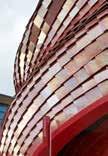
Für die Verkleidung des von Daniel Libeskind entworfenen Vanke-Pavillon auf der EXPO2015 wurden Bios Self-Cleaning®-Platten verwendet.
Bios Self-Cleaning® vince l’Architizer A+Awards.

Bios Self-Cleaning® won the Architizer A+Awards.

Bios Self-Cleaning® remporte le prix Architizer A+Awards.
Bios Self-Cleaning® gewinnt den Architizer A+Awards.
Nuova collaborazione con il Dipartimento di Farmacia e Biotecnologie dell’Università di Bologna per Bios Antibacterial®
New collaboration with the Pharmacy and Biotechnologies Department of the University of Bologna for Bios Antibacterial®

Nouvelle collaboration avec le Département de Pharmacie et de Biotechnologies de l’Université de Bologne pour Bios Antibacterial®
Neue Zusammenarbeit mit der Fakultät für Pharmazie und Biotechnologie der Universität von Bologna für Bios Antibacterial®
Sole e pioggia come attivatori della conservazione estetica dell’architettura

Sun and rain as activators to preserve the appearance of architecture
Le soleil et la pluie comme activateurs de la conservation esthétique de l’architecture
Sonne und Regen als Auslöser für die Wahrung der Schönheit der Architektur

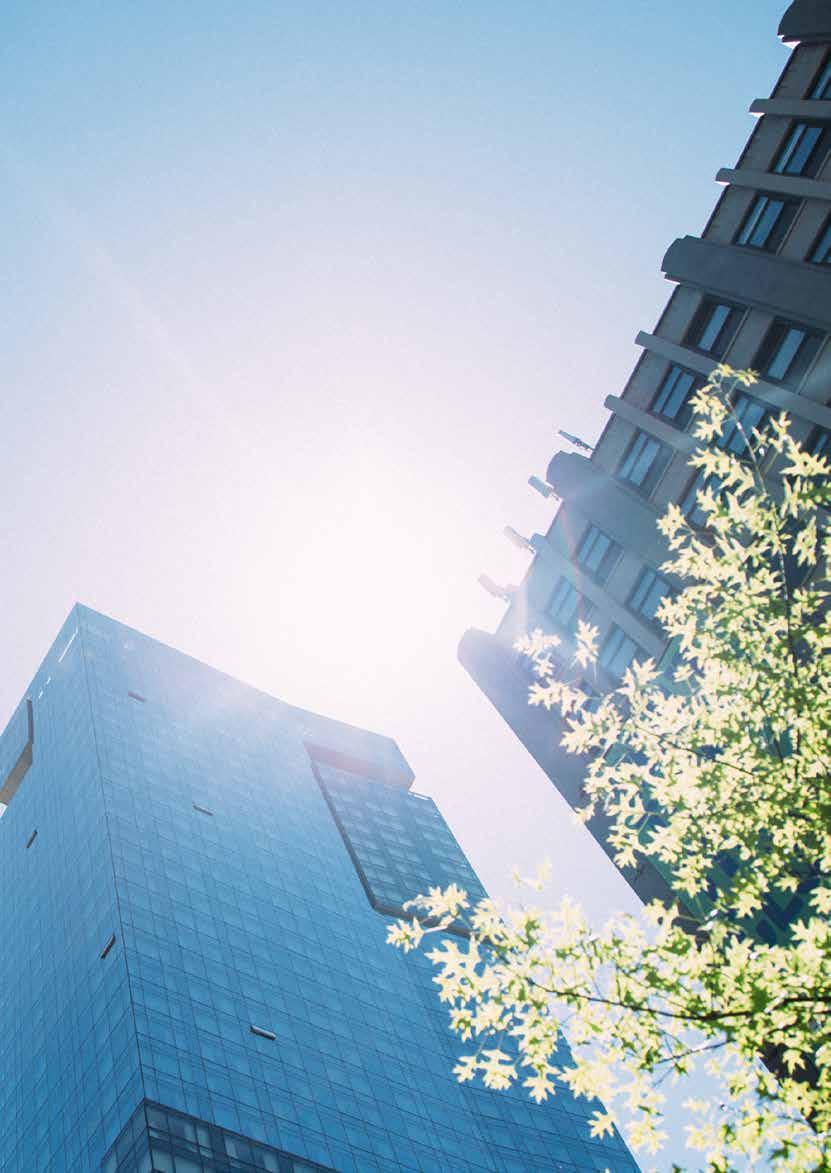
Il trattamento Bios Self-Cleaning® è impiegato nella realizzazione di rivestimenti esterni di facciata e involucri ventilati da oltre 14 anni. Grazie alla speciale tecnologia Hydrotect®, in presenza di luce solare Bios Self-Cleaning® attiva una reazione in grado di abbattere non solo i batteri, ma soprattutto gli inquinanti presenti nell’aria e decomporre lo sporco che si deposita sulla superficie delle piastrelle (vedi p.46, punto n.10), in modo che possa essere rimosso dallo scorrere dell’acqua piovana, grazie alla superidrofilia della superficie ceramica.
Bios Self-Cleaning® è in grado di sommare alle note caratteristiche estetiche e prestazionali dei rivestimenti ceramici in grès porcellanato, il drastico abbattimento degli interventi di pulizia e manutenzione delle superfici, garantendo un sensibile risparmio in termini economici e il mantenimento della qualità estetica e materica dell’edificio architettonico.
The Bios Self-Cleaning® treatment has been used for ventilated façades and cladding for over 14 years. Thanks to the special Hydrotect® technology, when the Bios Self-Cleaning® treatment comes into contact with sunlight, it triggers a reaction able to eliminate not only bacteria, but especially the pollutants in the air. It breaks down dirt that has settled on the surface of the tiles (see p. 47, point 10), so that it can be removed by rainwater, thanks to the superhydrophilicity of the ceramic material.
Bios Self-Cleaning® is able to team the renowned aesthetic and performance characteristics of porcelain stoneware coverings with an ability to drastically reduce the cleaning and maintenance operations required for the surfaces, thus guaranteeing significant savings and the maintenance of the aesthetic and material quality of buildings.
Depuis plus de 14 ans, le traitement Bios Self-Cleaning® est utilisé pour réaliser des revêtements de façade ainsi que des enveloppes ventilées. Grâce à la technologie spéciale Hydrotect®, Bios Self-Cleaning® déclenche, en présence de rayonnement solaire, une réaction capable d’éliminer non seulement les bactéries mais aussi et surtout les polluants présents dans l’air, de décomposer les saletés qui se déposent sur la surface des dalles (voir page 48, point n° 10) et de les éliminer grâce à l’eau de pluie et aux propriétés superhydrophiles de la surface céramique.
Bios Self-Cleaning® est en mesure d’associer les caractéristiques esthétiques et les performances reconnues des revêtements céramiques en grès cérame, à une importante diminution des opérations d’entretien et de nettoyage des surfaces, tout en garantissant des économies notables en matière de coûts et le maintien de la qualité esthétique et de la matière de l’ouvrage architectural.
Die Behandlung Bios Self-Cleaning® wird seit über 14 Jahren bei der Konstruktion von Außenfassadenverkleidungen und hinterlüfteten Gebäudehüllen eingesetzt. Dank der speziellen Hydrotect®-Technologie bindet Bios SelfCleaning® bei Sonneneinstrahlung nicht nur Bakterien, sondern vor allem die in der Luft vorhandenen Schadstoffe, und zersetzt den auf der Fliesenoberfläche abgelagerten Schmutz (siehe S.49, Punkt Nr.10). Die extrem hydrophile Keramikoberfläche sorgt dafür, dass der Schmutz durch das abfließende Regenwasser entfernt wird.



Bios Self-Cleaning® ergänzt die bekannten optischen und funktionellen Eigenschaften von Keramikverkleidungen aus Feinsteinzeug um die drastische Reduzierung der Reinigungs- und Wartungsarbeiten an den Oberflächen, was erhebliche wirtschaftliche Einsparungen garantiert und das Aussehen und die materielle Qualität des jeweiligen Gebäudes erhält.

La tecnologia Hydrotect®
La tecnologia Hydrotect® è impiegata su licenza da oltre 100 produttori di tutto il mondo, nei più differenti settori applicativi, dall’industria automobilistica alle costruzioni. Detentore del brevetto è il gruppo giapponese TOTO, leader globale nel settore delle tecnologie fotocatalitiche, con il quale Casalgrande Padana ha sottoscritto un Master Agreement nel 2012. L’origine della ceramica bioattiva è frutto di una serie di acquisizioni scientifiche sviluppate a partire dall’inizio degli anni Sessanta, ma è a metà anni Novanta che TOTO brevetta Hydrotect®, un coating capace di sommare ai vantaggi ottenibili grazie all’azione disgregante del TiO2 (biossido di titanio), quelli di una superficie superidrofila che, sotto l’azione degli UV, è in grado di ridurre l’angolo di contatto con l’acqua, favorendone il dilavamento costante.
Hydrotect® technology
Hydrotect® technology is used on licence by more than 100 manufacturers worldwide, and is applied in a range of sectors, from the automotive to the construction industry. The patent holder is the Japanese group TOTO, world leader in the photocatalytic technologies sector, with which Casalgrande Padana signed a Master Agreement in 2012. Bioactive ceramics derive from a series of scientific acquisitions developed from the beginning of the 1970s, but it was not until the mid-1990s that TOTO patented Hydrotect®, a coating able to combine the advantages that can be obtained from the disintegrating action of TiO2 (titanium dioxide), with those of a superhydrophilic surface, which, with the action of UV rays, is able to reduce the contact angle with water, which assists the constant washing away of dirt.
La technologie Hydrotect®
La technologie Hydrotect® est utilisée sous licence par plus de 100 producteurs à travers le monde, dans les secteurs d’application les plus divers, de l’industrie automobile aux constructions. Le titulaire du brevet est le groupe japonais TOTO, leader mondial dans le secteur des technologies photocatalytiques, avec lequel Casalgrande Padana a signé un contrat-cadre en 2012. L’origine de la céramique bioactive est le fruit d’une série d’acquisitions scientifiques développées à partir du début des années soixante ; c’est toutefois au milieu des années quatre-vingt-dix que TOTO fait breveter Hydrotect®, un revêtement capable d’associer les avantages pouvant être obtenus grâce à l’action de désintégration du TiO2 (dioxyde de titane) à ceux d’une surface superhydrophile qui, sous l’action du rayonnement UV, est en mesure de réduire l’angle de contact avec l’eau, en favorisant l’écoulement constant.
Die Technologie Hydrotect®
Die Technologie Hydrotect® wird unter Lizenz von über 100 Herstellern weltweit in den verschiedensten Anwendungsbereichen eingesetzt, von der Automobilindustrie bis zum Bauwesen. Patentinhaberin ist die japanische Gruppe TOTO, ein weltweit führendes Unternehmen im Bereich der photokatalytischen Technologie, mit der Casalgrande Padana 2012 einen Rahmenvertrag unterzeichnet hat. Den Ursprung von bioaktiver Keramik verdanken wir zahlreichen wissenschaftlichen Errungenschaften, die seit Anfang der 60er-Jahre erzielt wurden. Mitte der 90er-Jahre ließ TOTO Hydrotect® patentieren, eine Beschichtung, die dank der zersetzenden Wirkung von TiO2 (Titandioxid) neben den Vorteilen einer extrem hydrophilen Oberfläche, die unter der Einwirkung von UV-Strahlen den Kontaktwinkel mit Wasser verringern kann, eine konstante Auswaschung begünstigt.

Le prestazioni e i vantaggi di Bios Self-Cleaning®
Performance and advantages of Bios Self-Cleaning®
Les performances et les avantages de Bios Self-Cleaning®
Die Leistungsmerkmale und Vorteile von Bios Self-Cleaning®
Autopulente Superidrofilia
L’innovativa tecnologia Hydrotect®, applicata alle lastre ceramiche superidrofile, consente alle facciate esterne degli edifici di autopulirsi, preservandone l’estetica.
Self-cleaning
Superhydrophilic
The innovative Hydrotect® technology, applied to superhydrophilic ceramic tiles, enables the external façades of buildings to self-clean, preserving their appearance.
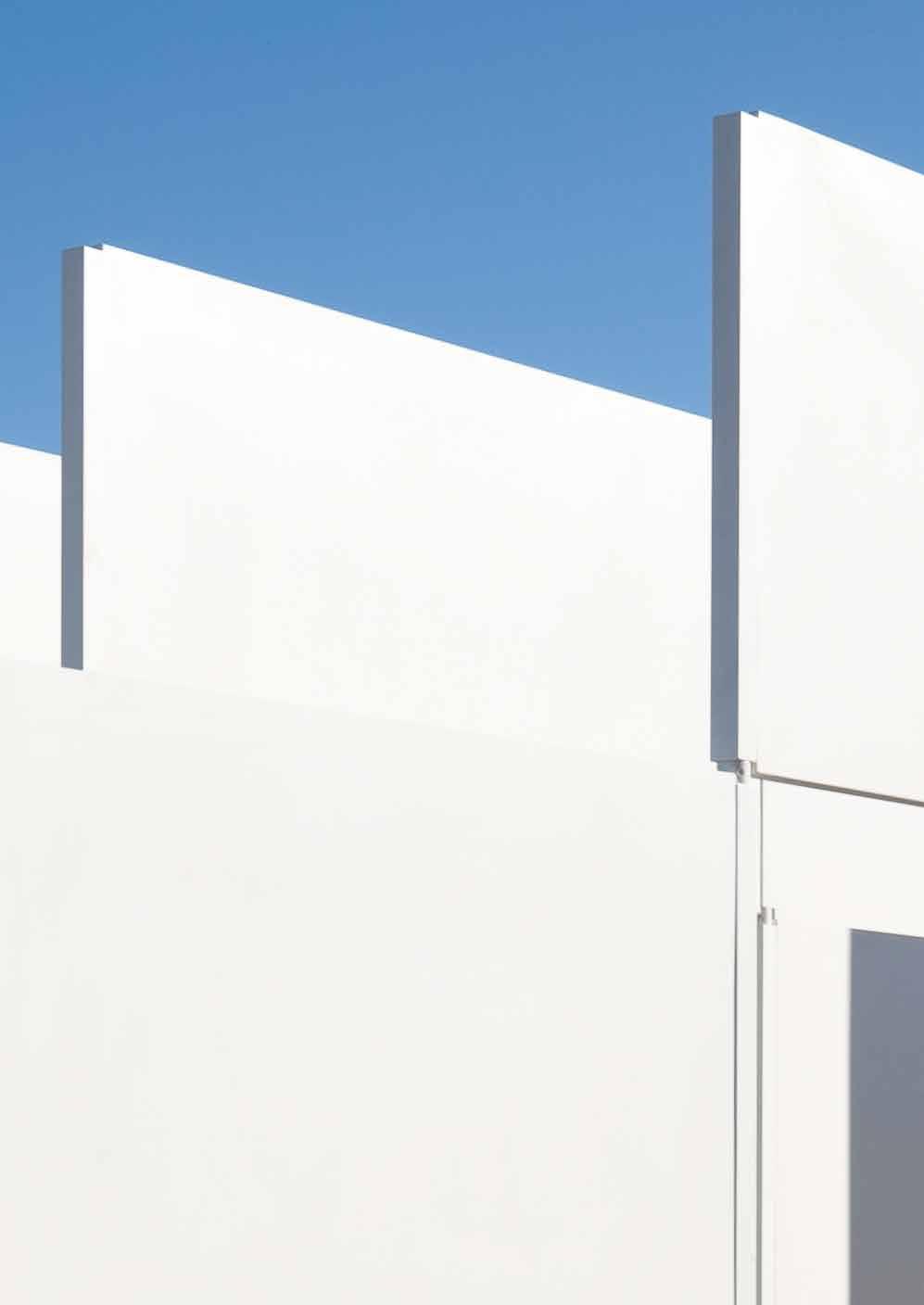
Autonettoyant
Superhydrophile
Appliquée aux dalles céramiques superhydrophiles, la technologie innovante Hydrotect® permet aux façades des bâtiments de s’autonettoyer tout en préservant leur aspect esthétique.
Selbstreinigend
Extrem hydrophil
Dank der innovativen Hydrotect®Technologie, die auf extrem hydrophile Keramikplatten aufgebracht wird, können sich die Außenfassaden von Gebäuden selbst reinigen und ihr Aussehen bewahren.
Antinquinamento
Purifica l’aria
Gli agenti inquinanti, presenti nell’aria di centri urbani e metropolitani che entrano in contatto con le superfici trattate, vengono decomposti e convertiti in sostanze non nocive.
Anti-pollution
Purifies the air
When the polluting agents present in the air in urban and metropolitan areas come into contact with the surfaces treated, they are broken down and rendered harmless.
Antipollution
Purifie l’air
Les agents polluants présents dans l’air des centres-villes qui entrent en contact avec les surfaces traitées sont décomposés et transformés en substances non nocives.
Schutz vor
Umweltverschmutzung
Reinigt die Luft
Die in der Luft von Stadt- und Ballungszentren vorhandenen Schadstoffe, die mit den behandelten Oberflächen in Berührung kommen, werden zersetzt und in unschädliche Stoffe umgewandelt.
Antibatterico
Uccide i batteri
Tramite la reazione fotocatalitica, Bios Self-Cleaning® è in grado di decomporre ed eliminare germi e batteri.
Antibacterial
Kills bacteria
The photocatalytic reaction of Bios Self-Cleaning® is able to break down and eliminate germs and bacteria.
Antibactérien
Élimine les bactéries
Par l’intermédiaire de la réaction photocatalytique, Bios Self-Cleaning® est en mesure de décomposer et d’éliminer les germes et les bactéries.
Antibakteriell
Tötet Bakterien ab Durch die photokatalytische Reaktion zersetzt und eliminiert Bios Self-Cleaning® Keime und Bakterien.
Sostenibile
Si attiva con l’energia solare
Il processo autopulente delle superfici trattate con Bios Self-Cleaning® avviene grazie alla reazione fotocatalitica e all’azione dilavante dell’acqua piovana, due fonti energetiche del tutto ecosostenibili.
Sustainable
Activated with the energy of the sun
The self-cleaning process of the surfaces treated with Bios Self-Cleaning® takes place thanks to the photocatalytic reaction and the washing action of rainwater, two entirely eco-sustainable sources of energy.

Durable
S’active avec l’énergie solaire
Le processus autonettoyant des surfaces traitées avec Bios Self-Cleaning® se produit grâce à la réaction photocatalytique et à l’écoulement de l’eau de pluie, deux sources énergétiques totalement écodurables.
Nachhaltig
Durch Sonnenenergie aktiviert
Der Selbstreinigungsprozess der mit Bios Self-Cleaning® behandelten Oberflächen erfolgt dank der photokatalytischen Reaktion und der auswaschenden Wirkung des Regenwassers, zwei völlig umweltverträglichen Energiequellen.
Inalterabile
Insensibile allo scorrere del tempo
La tecnologia Hydrotect®, integrata in maniera permanente nella lastra ceramica, garantisce un’azione efficace nel tempo, non alterabile dall’usura.
Unalterable
Unaffected by the passage of time Hydrotect® technology is permanently integrated into the ceramic tile, so it is unaltered by wear and tear and guarantees effective action over time.
Inaltérable
Insensible au temps qui passe
Intégrée de façon permanente dans la dalle céramique, la technologie Hydrotect® garantit une action efficace au fil du temps et résistante à l’usure.
Unveränderlich
Keine Beeinträchtigung über die Zeit
Die Hydrotect® -Technologie wird dauerhaft in die Keramikplatte eingebracht und garantiert eine effektive Wirkung über die Zeit, die durch Abnutzung nicht beeinträchtigt wird.
Innocuo
Per l’uomo e l’ambiente
Bios Self-Cleaning® si avvale di una tecnologia del tutto naturale, non tossica per l’uomo, gli animali e l’ambiente. Non causa allergie e non influisce sull’acidificazione del suolo.
Harmless
For humans and for the environment
Bios Self-Cleaning® uses a completely natural technology that is non-toxic for humans, animals and the environment. It does not cause allergies, and has no impact on soil acidification.
Inoffensif
Pour l’homme et pour l’environnement
Bios Self-Cleaning® se base sur une technologie totalement naturelle, atoxique pour l’homme, les animaux et l’environnement. Elle ne provoque pas d’allergies et n’a aucune incidence sur l’acidification du sol.
Nicht toxisch
Weder für den Mensch noch für die Umwelt
Bios Self-Cleaning® nutzt eine absolut natürliche Technologie, die weder für Menschen, Tiere noch für die Umwelt toxisch ist. Sie verursacht keine Allergien und führt nicht zur Übersäuerung des Bodens.

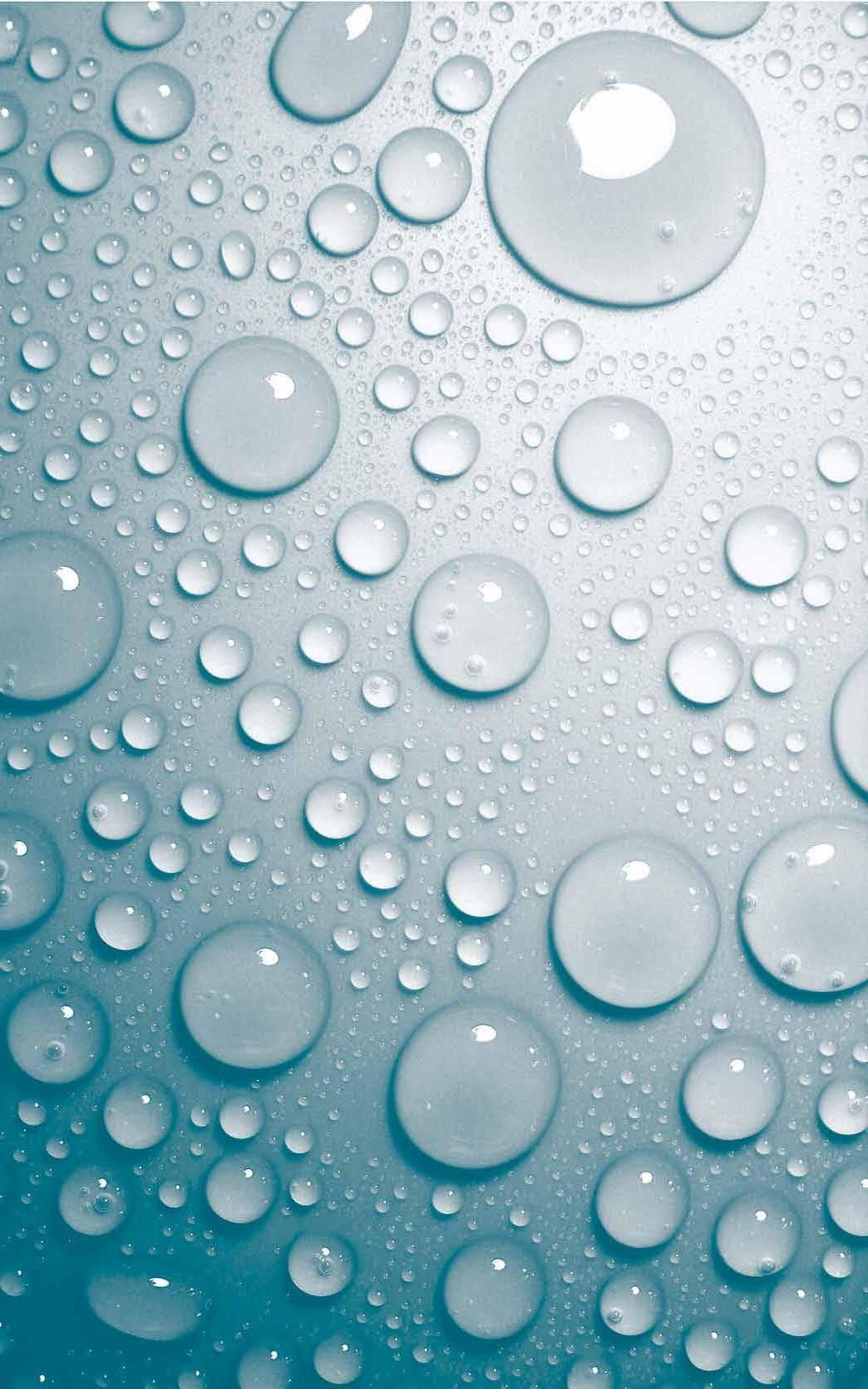
La superficie ceramica che si pulisce da sola
The ceramic surface that cleans itself La surface céramique qui se nettoie toute seule Die Keramikoberfläche, die sich selbst reinigt
Autopulente. L’esclusiva formulazione di Bios Self-Cleaning® è a base di biossido di titanio (TiO2), una sostanza del tutto naturale, capace di disgregare i depositi organici che nel tempo si creano sulle facciate degli edifici. Grazie alla super idrofilia delle superfici ceramiche, queste si detergono tramite l’effetto dilavante della pioggia. Il processo autopulente può essere riassunto in 3 semplici passaggi:
1. Quando la luce del sole (raggi UVA) irradia la superficie trattata con Bios Self-Cleaning® si genera ossigeno attivo (O2-, -OH).
2. L’ossigeno attivo (O2-, -OH) decompone lo sporco in sostanze meno aderenti.
3. L’acqua piovana si espande sulla superficie generando un sottilissimo strato che deterge ed elimina lo sporco precedentemente decomposto dall’ossigeno attivo.
Self-cleaning. The exclusive formula of Bios Self-Cleaning® is based on titanium dioxide (TiO2), a completely natural substance able to break up the organic deposits that settle over time on the façades of buildings. Because they are superhydrophilic, ceramic surfaces are cleaned by the washing action of rainwater. The self-cleaning process can be summed up in three simple steps:
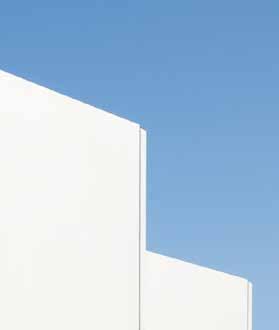


1. When sunlight (UVA rays) irradiates the surface treated with Bios Self-Cleaning®, active oxygen (O2-, -OH) is generated.
2. The active oxygen (O2-, -OH) breaks the dirt down into less adherent surfaces.
3. The rainwater expands on the surface, generating an extremely fine layer that cleans and removes the dirt broken down by the active oxygen.
Autonettoyant. La formule exclusive de Bios Self-Cleaning® est à base de dioxyde de titane (TiO2), une substance totalement naturelle en mesure de décomposer les dépôts organiques qui se créent au fil du temps sur les façades des bâtiments. Grâce au caractère superhydrophile des surfaces céramiques, celles-ci se nettoient grâce à l’effet provoqué par l’écoulement de la pluie. Le processus autonettoyant peut se résumer en 3 étapes simples :
1. Quand la lumière du soleil (rayonnement UVA) irradie la surface traitée avec Bios Self-Cleaning®, de l’oxygène actif (O2-, -OH) est produit.
2. L’oxygène actif (O2-, -OH) décompose les saletés en des substances moins adhérentes.
3. L’eau de pluie se répand sur la surface en générant une couche très fine qui nettoie et élimine les saletés décomposées au préalable par l’oxygène actif.
Selbstreinigend. Die exklusive Wirkstoffformel von Bios Self-Cleaning® basiert auf Titandioxid (TiO2), einer völlig natürlichen Substanz, die organische Ablagerungen, die sich mit der Zeit auf den Fassaden von Gebäuden bilden, abbauen kann. Dank der extrem hydrophilen Keramikoberflächen werden diese durch den Regen abgespült. Der Selbstreinigungsprozess lässt sich in drei einfachen Schritten zusammenfassen:
1. Bei Sonneneinstrahlung (UVA-Strahlen) auf die mit Bios Self-Cleaning® behandelte Oberfläche wird aktiver Sauerstoff (O2-, -OH) erzeugt.
2. Der aktive Sauerstoff (O2-, -OH) zersetzt den Schmutz in eine weniger haftende Substanz.
3. Das Regenwasser dehnt sich auf der Oberfläche aus und erzeugt eine sehr dünne Schicht, die den zuvor durch den aktiven Sauerstoff zersetzten Schmutz löst und abträgt.
Efficacia autopulente di Bios Self-Cleaning®
Self-cleaning property of Bios Self-Cleaning®
Efficacité autonettoyante de Bios Self-Cleaning®
Wirksamkeit der selbstreinigung von Bios Self-Cleaning®
Macchia organica 1
Organic stain 1
Tache organique 1
Organischer Fleck 1
Macchia oleosa, polvere e fuliggine, gas di scarico: Efficace
Greasy stain, dust and soot, exhaust gases: Effective
Tache graisseuse, poussière et suie, gaz d’échappement: Efficace
Ölfleck, Staub und Russt, Abgas: Wirksam
Macchia organica 2
Organic stain 2
Tache organique 2
Organischer Fleck 2
Sigillante al silicone, graffiti, vernice, alveari, ragnatele: Difficile da rimuovere completamente mediante l’effetto autopulente
Silicone sealant, graffiti, paint, beehives, spider webs: Cannot be completely removed
Colle silicone, graffitis, peinture, ruches, toiles d’araignée: Difficile à éliminer complètement au moyen de l’action autonettoyante
Silikondichtmasse, Graffiti, Lack, Bienenstöcke, Spinnennetze: Schwierig komplett zu entfernen durch die selbstreinigende Wirkung
Macchia non organica 1
Non organic stain 1
Tache non organique 1
Nicht organischer Fleck 1
Sabbia, fango: Efficace
Sand, mud: Effective
Sable, boue: Efficace
Sand, Schlamm: Wirksam
Macchia non organica 2
Non organic stain 2
Tache non organique 2
Nicht organischer Fleck 2
Sigillante al silicone, graffiti, Ruggine, efflorescenze, iridescenze: Non efficace
Rust, efflorescences, iridescent spots: Ineffective
Rouille, efflorescences, irisations: Non efficace
Rust, Ausblühungen, Irideszenzen: Unwirksam


Purified air, free from polluting agents
Un air purifié, libéré de tout agent polluant Gereinigte Luft ohne Schadstoffe
Antiquinamento. Una delle principali cause di inquinamento dell’atmosfera, che minaccia concretamente la salute dell’uomo e dell’ambiente, è costituita dai NOx (ossidi di azoto) sottoprodotti dei processi di combustione, generati dagli automezzi, dal riscaldamento domestico e da alcuni processi industriali. L’ossigeno attivo (O2-, -OH) prodotto dagli involucri di facciata rivestiti con Bios Self-Cleaning® ossida i NO x in sostanze non nocive NO3- (nitrato solubile in acqua). Grazie alla loro scarsa quantità, i NO3- ossidati dalla reazione fotocatalitica non solo non hanno alcuna influenza sull’acidificazione del suolo, ma offrono un apprezzabile contributo al miglioramento della qualità ambientale degli insediamenti urbani. Basti pensare che un rivestimento di 1000 m2 di facciata trattato con Bios Self-Cleaning® ha la capacità di purificare l’aria in misura paragonabile a un bosco delle dimensioni di un campo da calcio, oppure di eliminare gli ossidi di azoto (NOx) emessi da 70 automobili nel corso di un’intera giornata.
Anti-pollution. One of the main causes of air pollution, which poses a constant threat to both human health and the environment, is the NOx (nitrogen oxides) that are sub-products of combustion processes, generated by motor vehicles, domestic heating systems and a number of industrial processes. The active oxygen (O2-, -OH) produced by the cladding covered with Bios Self-Cleaning® oxidises the NO x into non-harmful NO3- substances (water-soluble nitrate). Because the amount is small, the NO3- oxidised by the photocatalytic reaction not only have no influence on soil acidification, but also make an appreciable contribution to improving the quality of the environment in urban areas. It is sufficient to consider that 1000 m2 of façade covering treated with Bios Self-Cleaning® has a capacity to purify the air comparable to an area of woodland the size of a football pitch, or the capacity to eliminate the amount of nitrogen oxides (NOx) emitted by 70 motor vehicles in the course of an entire day.
Antipollution. Les NO x (oxydes d’azote) représentent une des principales causes de la pollution de l’air, qui menace concrètement la santé de l’homme et de l’environnement. Il s’agit des sous-produits des processus de combustion, émis par les véhicules, le chauffage domestique et certains processus industriels. L’oxygène actif (O2-, -OH) généré par les enveloppes de façades revêtues des produits Bios Self-Cleaning® oxyde les NOx en substances non nocives NO3(nitrate hydrosoluble). Grâce à leur faible quantité, les NO3- oxydés par la réaction photocatalytique n’ont aucune incidence sur l’acidification du sol. De plus, ils contribuent favorablement à l’amélioration de la qualité de l’environnement des centres urbains. Il suffit de penser qu’une façade de 1 000 m2 traitée avec Bios Self-Cleaning® a une capacité de purifier l’air comparable à celle d’une forêt de la taille d’un terrain de football, ou d’éliminer les oxydes d’azote (NOx) émis pendant 24 heures par 70 véhicules.
Schutz vor Umweltverschmutzung. Eine der Hauptursachen für die Luftverschmutzung, die eine echte Bedrohung für die menschliche Gesundheit und die Umwelt darstellt, ist NOx (Stickoxide), ein Nebenprodukt von Verbrennungsprozessen, das durch Fahrzeuge, Wohnraumheizungen und bestimmte industrielle Prozesse erzeugt wird. Der aktive Sauerstoff (O2-, -OH), der von mit Bios Self-Cleaning® beschichteten Fassadenverkleidungen produziert wird, oxidiert NOx zu harmlosem NO3(wasserlösliches Nitrat). Das durch die photokatalytische Reaktion oxidierte NO3- hat aufgrund seiner geringen Menge keinen Einfluss auf die Bodenversauerung, trägt jedoch erheblich zur Verbesserung der Umweltqualität in Städten bei. Man bedenke, dass eine 1000 m2 große Fassadenverkleidung mit Bios Self-Cleaning® die Luft in einem Ausmaß reinigt, das einem Wald in der Größe eines Fußballfeldes entspricht, oder die Menge an Stickoxiden (NOx) eliminiert, die von 70 Autos im Laufe eines Tages produziert wird.
Un’aria purificata, libera da agenti inquinanti

Garantire una qualità della vita migliore, per la Terra e per tutti i suoi abitanti
Guaranteeing a better quality of life for the Earth and all its inhabitants
Garantir une meilleure qualité de vie, pour la Terre et tous ses habitants
Gewährleistung einer besseren Lebensqualität für die Erde und all ihre Bewohner

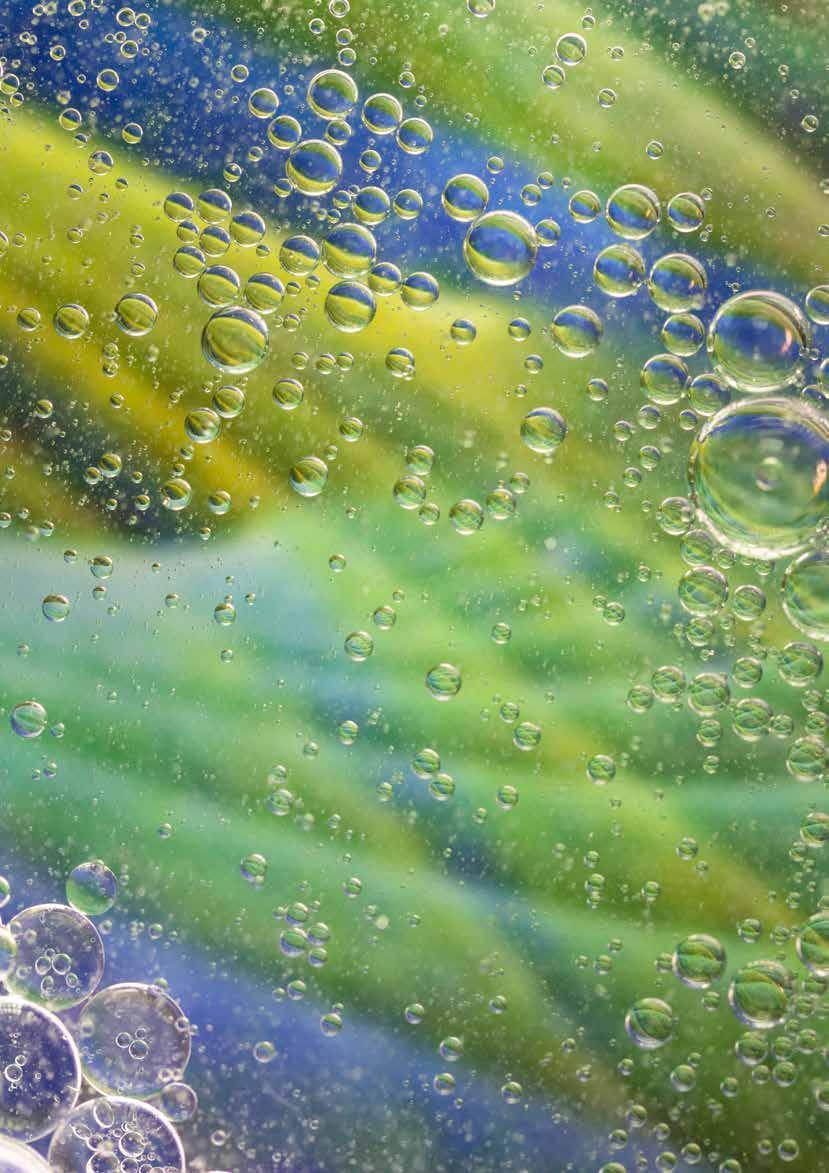
The ceramic response to germs and bacteria
La réponse céramique contre les germes et les bactéries
Die keramische Antwort auf Keime und Bakterien
Antibatterico. I prodotti trattati con Bios Self-Cleaning® si distinguono per caratteristiche antibatteriche, ottenute grazie all’effetto dei raggi UV contenuti nella luce solare. L’irraggiamento innesca una reazione fotocatalitica sulla superficie delle lastre ceramiche in grado di produrre ossigeno attivo e decomporre i batteri. Questo processo è reso possibile dall’applicazione di biossido di titanio (TiO2) sulle lastre che le trasforma in un materiale fotocatalitico. La fotocatalisi sulle lastre fa sì che, in presenza di aria, umidità e luce, avvenga un potente processo ossidativo che porta alla decomposizione di contaminanti organici ed inorganici che vengono in contatto con la superficie ceramica. L’uccisione dei batteri comporta anche una conseguente riduzione dei cattivi odori.
Antibacterial. The distinctive feature of products treated with Bios Self-Cleaning® technology is their antibacterial qualities, obtained thanks to the effect of the UV rays contained in sunlight. The UV rays trigger a photocatalytic reaction on the surface of the ceramic tiles that is able to produce active oxygen and break down bacteria. This process is made possible by the application of titanium dioxide (TiO2) on the tiles, which turns them into a photocatalytic material. In the presence of air, humidity and light, the photocatalysis on the tiles generates a powerful oxidising process, which leads to the decomposition of organic and inorganic contaminants that come into contact with the ceramic surface. The killing of the bacteria also reduces unpleasant odours.
Antibactérien. Les produits traités avec Bios Self-Cleaning® se distinguent par leurs caractéristiques antibactériennes obtenues grâce à l’effet des rayons UV contenus dans la lumière du soleil. Le rayonnement déclenche une réaction photocatalytique sur la surface des dalles céramiques, en mesure de produire de l’oxygène actif et de décomposer les bactéries. Ce processus est possible grâce à l’application de dioxyde de titane (TiO2) sur les dalles, qui les transforme en un matériau photocatalytique. En présence d’air, d’humidité et de lumière, la photocatalyse sur les dalles provoque un important processus oxydant qui permet de décomposer les contaminants organiques et inorganiques qui entrent en contact avec la surface céramique. Grâce à l’élimination des bactéries, les mauvaises odeurs se réduisent également sensiblement.
Antibakteriell. Mit Bios Self-Cleaning® behandelte Produkte zeichnen sich durch ihre antibakteriellen Eigenschaften aus, die durch die Wirkung der im Sonnenlicht enthaltenen UV-Strahlen erzielt werden. Die Sonneneinstrahlung löst auf der Oberfläche der Keramikplatten eine photokatalytische Reaktion aus, bei der aktiver Sauerstoff produziert und Bakterien zersetzt werden. Dieser Prozess wird durch das Aufbringen von Titandioxid (TiO2) auf die Platten ermöglicht, was diese in ein photokatalytisches Material verwandelt. Die Photokatalyse auf den Platten führt in Verbindung mit Luft, Feuchtigkeit und Licht zu einem starken oxidativen Prozess, der zur Zersetzung von organischen und anorganischen Verunreinigungen führt, die sich auf der Keramikoberfläche ablagern. Durch das Abtöten von Bakterien kommt es auch zu einer deutlichen Reduzierung von schlechten Gerüchen.
La risposta ceramica contro germi e batteri
Important solar energy for the environment
Une énergie solaire importante pour l’environnement
Eine für die Umwelt wichtige Solarenergie
Sostenibile. Il processo autopulente di Bios Self-Cleaning® è del tutto naturale e per di più ecosostenibile, in quanto utilizza l’energia solare per attivare la reazione fotocatalitica mentre sfrutta l’azione dilavante dell’acqua piovana per rimuovere lo sporco. La causa principale del deterioramento delle facciate degli edifici in contesti urbani e metropolitani è da attribuire alla concentrazione di depositi organici (macchie oleose, polvere, fuliggine) generati da oli e gas di scarico, emessi da automobili, caldaie per riscaldamento e impianti industriali. Grazie al trattamento Bios SelfCleaning® questi depositi vengono prima decomposti in maniera naturale e poi facilmente eliminati dalla pioggia, generando così un drastico abbattimento degli interventi di pulizia e manutenzione delle superfici, con conseguente risparmio in termini economici e di risorse.
Sustainable. The Bios Self-Cleaning® process is completely natural, as well as ecosustainable, because it uses solar energy to activate the photocatalytic reaction, while exploiting the washing action of rainwater to remove dirt. The main cause of deterioration of building façades in urban and metropolitan environments is attributable to the concentration of organic deposits (oily stains, dust, soot) generated by oils and exhaust gases emitted by motor vehicles, boilers for heating and industrial systems. Thanks to the Bios Self-Cleaning® treatment, these deposits are first broken down naturally and then easily removed by rain, thus drastically reducing the cleaning and maintenance operations required for the surfaces and therefore saving both money and resources.
Durable. Le processus autonettoyant de Bios Self-Cleaning® est totalement naturel et également écodurable, étant donné qu’il utilise l’énergie solaire pour activer la réaction photocatalytique tandis que l’action de l’écoulement de l’eau de pluie permet d’éliminer les saletés. La cause principale de la détérioration des façades des bâtiments dans les milieux urbains est due à la concentration de dépôts organiques (taches graisseuses, poussières, suie) générés par des huiles et des gaz d’échappement, émis par les véhicules, les chaudières et les installations industrielles. Grâce au traitement Bios Self-Cleaning®, ces dépôts sont tout d’abord décomposés de façon naturelle puis facilement éliminés par la pluie, ce qui permet de générer une importante diminution des opérations d’entretien et de nettoyage des surfaces, en garantissant des économies en termes de coûts et de ressources.
Nachhaltig. Der Selbstreinigungsprozess von Bios Self-Cleaning® ist völlig natürlich und darüber hinaus ökologisch nachhaltig, da er die Sonnenenergie zur Aktivierung der photokatalytischen Reaktion und gleichzeitig die Spülwirkung des Regenwassers zur Entfernung von Schmutz nutzt. Die Hauptursache für den Verfall von Gebäudefassaden in städtischen und großstädtischen Ballungsgebieten liegt in der Konzentration von organischen Ablagerungen (ölige Flecken, Staub, Ruß), die durch Öle und Abgase von Autos, Heizungen und Industrieanlagen entstehen. Dank der Behandlung Bios Self-Cleaning® werden diese Ablagerungen zunächst auf natürliche Weise zersetzt und dann problemlos durch den Regen abgespült. Dies führt zu einer drastischen Verringerung der Reinigungsund Wartungsarbeiten an den Oberflächen und damit zu Kosten- und Ressourceneinsparungen.
Un’energia solare importante per l’ambiente
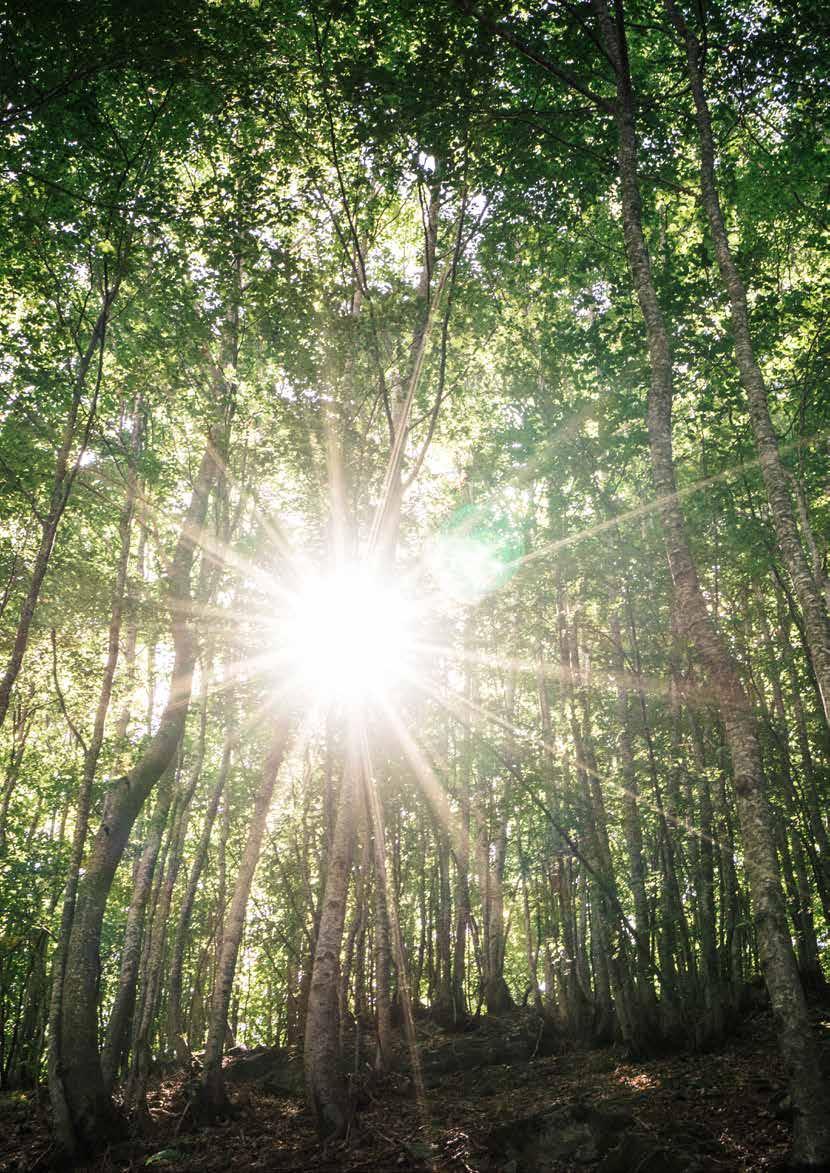

Ceramic surfaces that never age Des surfaces céramiques qui ne vieillissent jamais Keramische Oberflächen, die nie altern
Inalterabile. Grazie a una severa serie di prove di laboratorio è stato possibile dimostrare che le prestazioni di Bios Self-Cleaning® non si riducono nel tempo. La durabilità è stata confermata sottoponendo le lastre ceramiche a un test d’invecchiamento accelerato in condizioni equiparabili a 50 anni di esposizione all’esterno. Il Sunshine Weather Meter è uno strumento di prova comunemente impiegato in Giappone per prevedere la durata dei prodotti. Le condizioni dei test sul campo (temperatura, umidità, intensità dei raggi UV e dilavamento della pioggia) vengono ricreate artificialmente e variate al suo interno in modo da riprodurre fedelmente la realtà a contorno. Per quanto concerne la resistenza al calpestio, va evidenziato come la tecnologia Hydrotect®, inglobata a caldo sulla superficie ceramica durante il ciclo di produzione industrializzata, sia in grado di assicurare nel tempo le sue caratteristiche rispettando le prescrizioni relative alle sollecitazioni da traffico leggero e le relative avvertenze di manutenzione.
Unalterable. A series of stringent laboratory tests have shown that the performance of Bios Self-Cleaning® remains constant over time. The durability of the treatment has been confirmed by subjecting the ceramic tiles to an accelerated ageing test in conditions equivalent to 50 years of exposure outdoors. The Sunshine Weather Meter is a testing instrument commonly used in Japan to predict the duration of products. The field test conditions (temperature, humidity, intensity of UV rays and washing effect of the rain) are recreated artificially and varied so as to faithfully reproduce the surrounding environment. As regards tread resistance, it is important to point out that the Hydrotect® technology incorporated into the ceramic surface at the firing stage of the industrial production cycle is able to maintain its characteristics over time, complying with the measures relating to stress from light foot traffic and the pertinent maintenance indications.
Inaltérable. De nombreux essais rigoureux menés en laboratoire ont permis de démontrer que les performances de Bios Self-Cleaning® ne s’altèrent pas au fil du temps. Cette longévité a été confirmée en faisant subir des tests de vieillissement accéléré aux dalles céramiques, ceci à des conditions comparables à 50 ans d’exposition aux agents atmosphériques. Le Sunshine Weather Meter est un outil de test fréquemment utilisé au Japon pour prévoir la durée de vie des produits. Les conditions des tests sur le terrain (température, humidité, intensité des rayons UV et écoulement de l’eau de pluie) sont recréées de façon artificielle et modifiées à l’intérieur afin de reproduire fidèlement la réalité environnante. En ce qui concerne la résistance au piétinement, il faut souligner que la technologie Hydrotect®, incorporée à chaud sur la surface céramique au cours du cycle de production industrialisée, est en mesure d’assurer dans le temps ses caractéristiques tout en respectant les prescriptions relatives aux sollicitations provoquées par une circulation légère et les précautions correspondantes en matière d’entretien.
Unveränderlich. Dank einer strengen Reihe von Labortests konnte nachgewiesen werden, dass die Wirkung von Bios Self-Cleaning® mit der Zeit nicht nachlässt. Die Haltbarkeit wurde dadurch bestätigt, dass die Keramikplatten einem beschleunigten Alterungstest unter Bedingungen unterzogen wurden, die mit 50 Jahren Witterungseinfluss im Freien vergleichbar sind. Das Sunshine Weather Meter ist ein in Japan weit verbreitetes Testinstrument zur Vorhersage der Haltbarkeit von Produkten. Die Feldtestbedingungen (Temperatur, Luftfeuchtigkeit, UV-Intensität und Niederschlagsmenge) werden künstlich nachgebildet und anschließend im Gerät variiert, um die Realität originalgetreu nachzubilden. Hinsichtlich der Trittfestigkeit ist hervorzuheben, dass die Hydrotect®Technologie, die während des industrialisierten Produktionszyklus in die Keramikoberfläche heiß eingebracht wird, ihre Eigenschaften dauerhaft gewährleistet und gleichzeitig die Anforderungen im Zusammenhang mit der Beanspruchung durch leichten Verkehr und die entsprechenden Wartungsvorschriften erfüllt.
Un perfetto equilibrio tra natura e tecnologia
A perfect balance between nature and technology
Un équilibre parfait entre nature et technologie
Ein perfektes Gleichgewicht zwischen Natur und Technik
Innocuo. L’utilizzo di Bios Self-Cleaning® per il rivestimento per facciate e involucri ventilati esclude ogni rischio per la salute dell’uomo e per l’ambiente, sia durante il processo di fabbricazione e applicazione che di utilizzo finale. Il biossido di titanio è infatti una sostanza naturale, assolutamente innocua. Il processo fotocatalitico, a sua volta, purifica l’aria liberandola dagli agenti inquinanti (NOx). Grazie alla loro scarsa quantità, i NO3- ossidati dalla reazione fotocatalitica non hanno alcuna influenza sull’acidificazione del suolo e quindi non costituiscono sostanze nocive per l’uomo e per l’ambiente.
Harmless. The use of Bios Self-Cleaning® on ventilated façades and cladding poses no risk to human health or to the environment, either during the manufacturing and application processes or for the end users: Titanium dioxide is a natural, completely harmless substance. In turn, the photocatalytic process purifies the air, freeing it from polluting agents (NOx). Because the amount is small, the NO3- oxidised by the photocatalytic reaction have no influence on soil acidification, so the substances are not harmful for either human health or the environment.
Inoffensif. L’utilisation de Bios Self-Cleaning® pour le revêtement de façades, ventilées ou pas, élimine tout risque pour la santé de l’homme et de l’environnement, aussi bien au cours du processus de fabrication et d’application qu’en phase d’utilisation finale. Le dioxyde de titane est en effet une substance naturelle, totalement inoffensive. Le processus photocatalytique purifie à son tour l’air en le libérant des agents polluants (NOx). Grâce à leur faible quantité, les NO3- oxydés par la réaction photocatalytique n’ont aucune incidence sur l’acidification du sol et ne représentent donc pas des substances nocives pour l’homme et pour l’environnement.
Nicht toxisch. Die Verwendung von Bios Self-Cleaning® für die Beschichtung von Fassaden und hinterlüfteten Gebäudehüllen schließt alle Risiken für die menschliche Gesundheit und die Umwelt aus, sowohl während des Herstellungs- und Anwendungsprozesses als auch während der finalen Nutzung. Titandioxid ist tatsächlich ein natürlicher Stoff, der absolut unbedenklich ist. Der photokatalytische Prozess wiederum reinigt die Luft und befreit sie von Schadstoffen (NOx). Das durch die photokatalytische Reaktion oxidierte NO3- hat aufgrund seiner geringen Menge keinen Einfluss auf die Bodenversauerung und stellt somit keinen Schadstoff für Mensch und Umwelt dar.
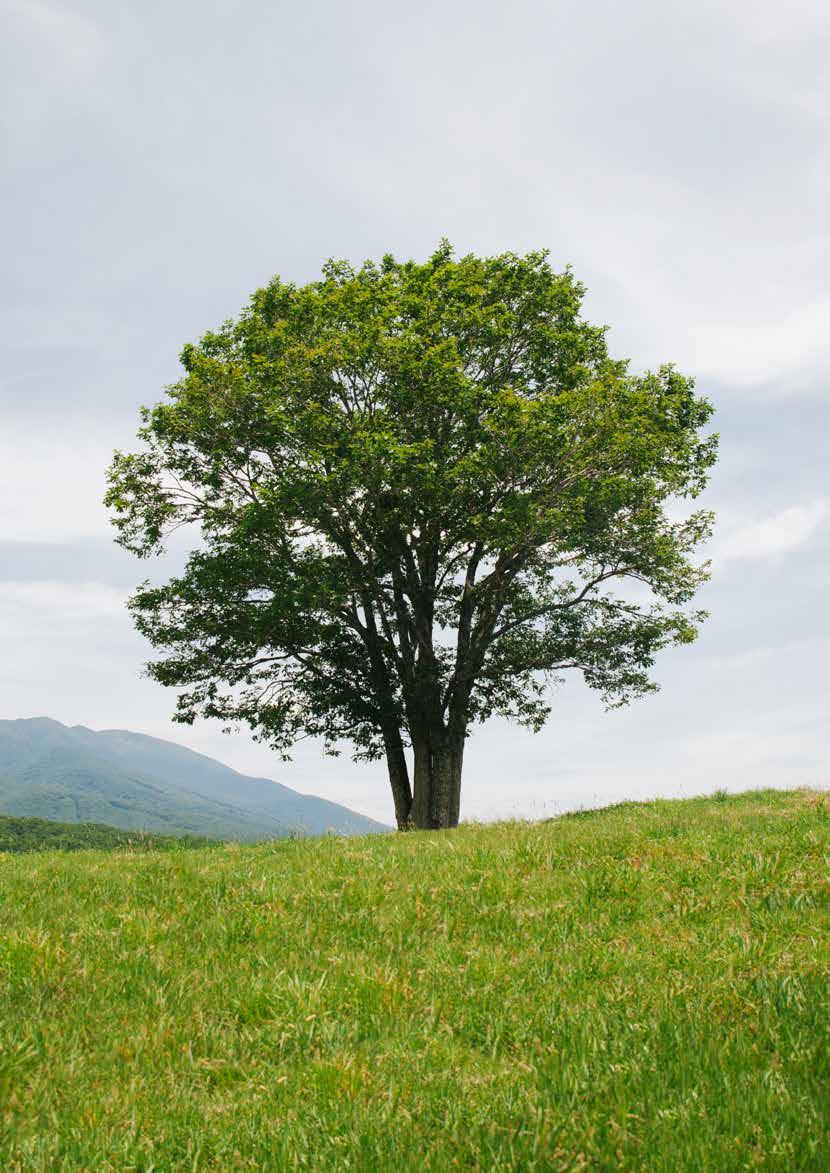
Una partnership in continua evoluzione
A continually evolving partnership
Un partenariat en constante évolution
Eine Partnerschaft in ständiger Entwicklung
Le prestazioni della tecnologia Hydrotect®, con cui si basa il trattamento Bios Self-Cleaning®, sono certificate secondo le più importanti norme internazionali. A garanzia del mantenimento delle prestazioni certificate, tutti i produttori che hanno ottenuto la licenza per l’utilizzo della tecnologia Hydrotect® sono soggetti al continuo monitoraggio da parte di TOTO per la verifica delle costanze qualitative dei trattamenti, così come per l’aggiornamento e l’evoluzione dei cicli, in base alla ricerca e alle best practice acquisite dalle applicazioni in tutto il mondo. Inoltre, attraverso il Master Agreement con TOTO, Casalgrande Padana è la prima azienda ceramica italiana a essere ammessa nell’esclusivo network internazionale degli Hydrotect® partners, nato per favorire l’interscambio di esperienze e l’innovazione tra i global player dei più diversi settori industriali che impiegano questa tecnologia.
The performance of the Hydrotect® technology Bios Self-Cleaning® is based on is certified according to the most important international standards. To ensure the certified performance is maintained, all manufacturers who have obtained the licence for the use of Hydrotect® technology are continually monitored by TOTO to verify that the quality of the treatments remains constant, and that the cycles are developed and updated based on the research conducted and best practices acquired from applications worldwide. In addition, through the Master Agreement with TOTO, Casalgrande Padana is the first Italian company to be admitted to the exclusive international network of Hydrotect® partners, created to aid the exchange of experiences and innovation among global players from a wide variety of industrial sectors that use this technology.
Les performances de la technologie Hydrotect® sur laquelle se base le traitement Bios Self-Cleaning® sont certifiées conformément aux normes internationales les plus importantes. Afin de garantir le respect des performances certifiées, tous les producteurs qui ont obtenu la licence pour pouvoir utiliser la technologie Hydrotect® sont soumis à un contrôle permanent de la part de TOTO pour vérifier la constance de la qualité des traitements ainsi que l’actualisation et l’évolution des cycles en fonction des recherches et des bonnes pratiques acquises par les applications à travers le monde. De plus, par l’intermédiaire du contrat-cadre avec TOTO, Casalgrande Padana est la première entreprise de céramique italienne à être admise au sein du réseau international exclusif des partenaires Hydrotect®, né pour favoriser les échanges d’expériences et l’innovation entre les acteurs mondiaux des secteurs industriels les plus divers qui utilisent cette technologie.
Die Leistungsfähigkeit der Hydrotect®-Technologie, auf der die Bios Self-Cleaning®-Behandlung basiert, ist nach den wichtigsten internationalen Normen zertifiziert. Um sicherzustellen, dass die zertifizierte Leistung beibehalten wird, unterliegen alle Hersteller, die für die Verwendung der Hydrotect®-Technologie lizenziert sind, einer kontinuierlichen Überwachung durch TOTO. So wird die gleichbleibende Qualität der Behandlungen überprüft und die Zyklen werden auf der Grundlage von Forschungsergebnissen und bewährten Verfahren, die aus Anwendungen auf der ganzen Welt gewonnen wurden, aktualisiert und weiterentwickelt. Darüber hinaus ist Casalgrande Padana durch den Rahmenvertrag mit TOTO der erste italienische Keramikfliesenhersteller, der in das exklusive internationale Netzwerk der Hydrotect®Partner aufgenommen wurde. Dieses Netzwerk wurde geschaffen, um den Erfahrungsaustausch und die Innovation unter den Global Playern der verschiedensten Industriezweige, die diese Technologie einsetzen, zu fördern.

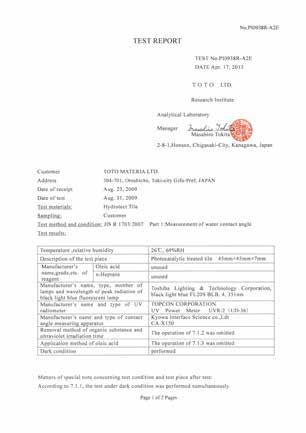

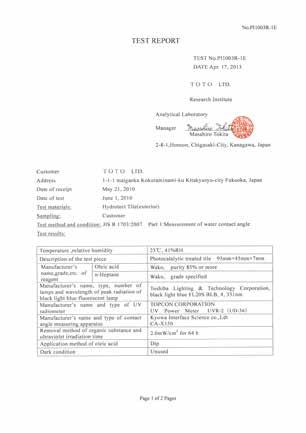
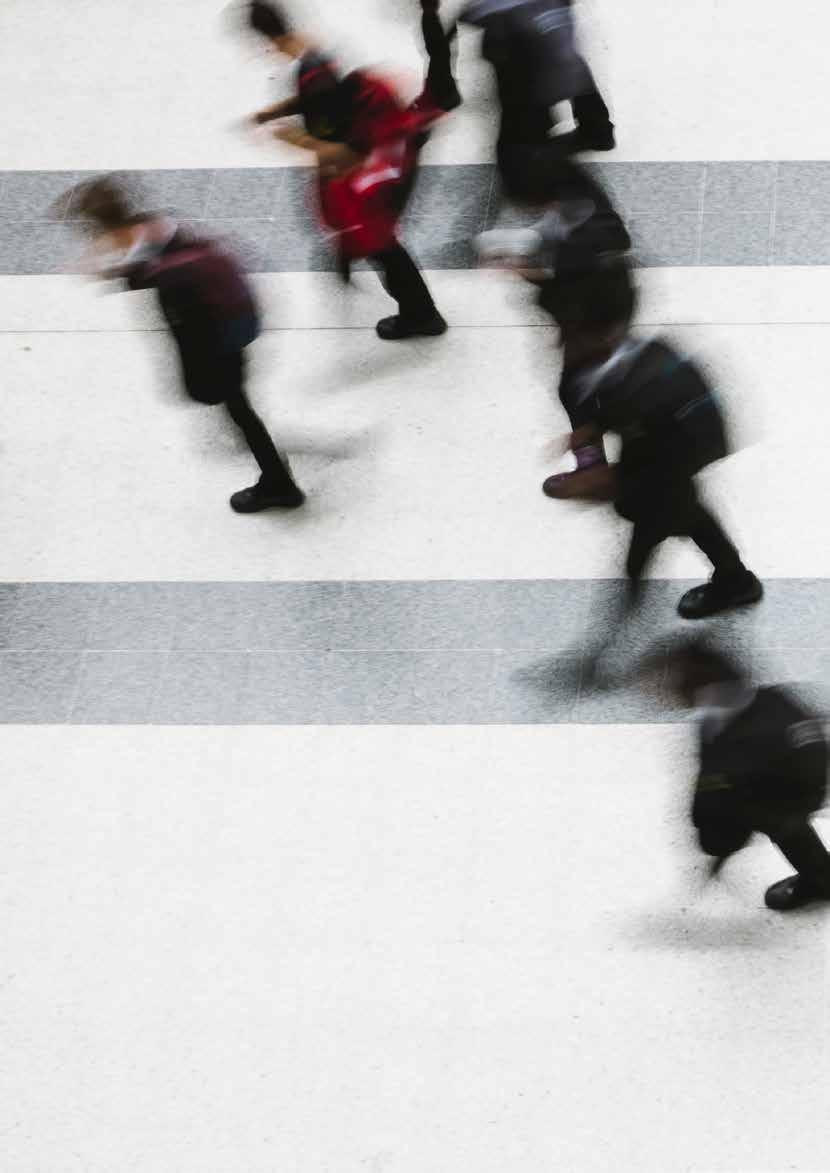
Applicazioni
La tecnologia al servizio della comunità
Applications. Technology at the service of the community Applications. La technologie au service de la communauté Anwendungen. Technik im Dienste der Gemeinschaft

Qualità superiori estese a tutti i prodotti Casalgrande Padana
Superior qualities extended to all Casalgrande Padana products
Des qualités supérieures qui s’étendent à tous les produits Casalgrande Padana Erstklassige Qualitäten, die auf alle Produkte von Casalgrande Padana ausgeweitet wurden
I grandi formati e la vasta gamma di lastre in grès porcellanato di Casalgrande Padana consentono di realizzare soluzioni estremamente versatili per permettere a progettisti, architetti e interior designers di esprimere liberamente la propria idea architettonica, attraverso formati, finiture e cromie sempre diverse, nei contesti e nelle condizioni applicative più differenziate. I sistemi di facciata ventilata interessano prevalentemente gli edifici pubblici e dei servizi, i centri commerciali e direzionali, i complessi industriali ma anche l’edilizia residenziale, ambiti di intervento dove il mantenimento nel tempo delle caratteristiche estetiche e tecniche dell’architettura ha il fine di valorizzarne la bellezza complessiva. Una risposta efficace, pratica ed ecologica arriva dal mondo ceramico con il trattamento Bios Self-Cleaning®, disponibile su richiesta per tutte le serie a catalogo, compresi i prodotti “on demand”.
The large formats and the wide range of Casalgrande Padana porcelain stoneware tiles allow for the creation of extremely versatile solutions for designers, architects and interior designers to freely express their idea of architecture using different formats, finishes and colours every time, in a wide variety of settings and application conditions. Ventilated façade systems are mainly used for public and service buildings, shopping malls, office buildings and industrial complexes, but they are also found on residential buildings, in areas of intervention where the purpose of maintaining aesthetic and technical architectural characteristics over time is to enhance their overall beauty. An effective, practical and ecological response comes from the world of ceramics, with the Bios Self-Cleaning® treatment, available on request for all the series in the catalogue, including “on demand” products.
Les grands formats et la vaste gamme de dalles en grès cérame de Casalgrande Padana offrent l’opportunité de réaliser des solutions extrêmement polyvalentes : elles permettent aux concepteurs, aux architectes et aux décorateurs d’intérieur d’exprimer librement leur idée architecturale, à travers des formats, des finitions et des couleurs toujours inédites, dans les conditions d’application et dans les contextes les plus divers. Les systèmes de façade ventilée concernent principalement les bâtiments publics et de services, les centres commerciaux et directionnels, les complexes industriels mais aussi la construction résidentielle, des espaces d’intervention où le maintien dans le temps des caractéristiques esthétiques et techniques de l’architecture vise à valoriser la beauté de l’ensemble. L’univers céramique offre une réponse efficace, pratique et écologique grâce au traitement Bios Self-Cleaning®, disponible sur demande pour toutes les collections présentes dans le catalogue, y compris les produits personnalisés.
Die großen Formate und die breite Auswahl an Feinsteinzeugplatten von Casalgrande Padana ermöglichen äußerst vielseitige Lösungen, mit denen Planer, Architekten und Innenarchitekten mithilfe verschiedener Formate, Oberflächenausführungen und Farbgebungen ihre eigenen architektonischen Ideen in den unterschiedlichsten Kontexten und Anwendungsbedingungen frei zum Ausdruck bringen können. Hinterlüftete Fassadensysteme werden vor allem für öffentliche Gebäude und im Dienstleistungsbereich, in Einkaufs- und Bürozentren, in Industriekomplexen, aber auch in Wohngebäuden eingesetzt, also in Bereichen, in denen der Erhalt der optischen und technischen Eigenschaften der Architektur im Laufe der Zeit dazu beitragen soll, die Attraktivität der Architektur insgesamt zu erhöhen. Eine effektive, praktische und ökologische Antwort kommt aus der Welt der Keramik mit der Bios Self-Cleaning®Behandlung, die auf Anfrage für alle im Katalog enthaltenen Serien erhältlich ist, auch für die „On-Demand“-Produkte.
Humanitas Congress Center Pieve Emanuele Milan, Italy Filippo Taidelli Architetto © Photos: Andrea Martiradonna Casalgrande Ceramic Cloud Casalgrande, Italy Kengo KumaMusei, centri culturali, installazioni artistiche
Architetture progettate per la comunità hanno la necessità di preservare il loro aspetto quotidianamente, per rispettare un concetto di qualità della vita superiore.
Museums, cultural centres, artistic installations
Architectures designed for the community need to preserve their appearance daily, in order to ensure superior quality of life.
Musées, centres culturels, installations artistiques

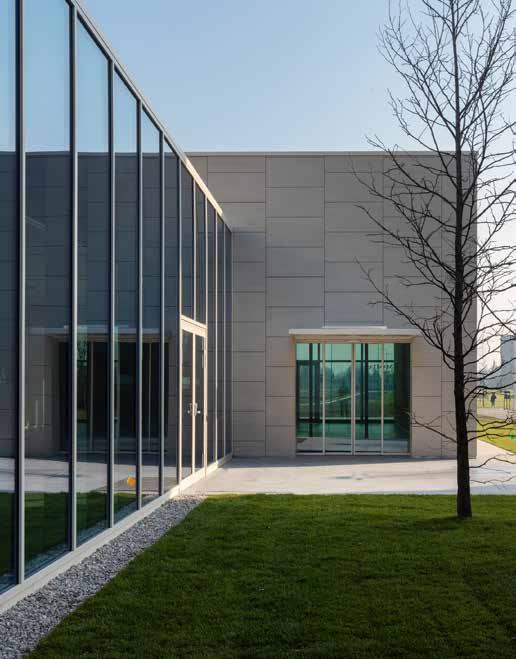
Les architectures conçues pour la communauté ont besoin de préserver leur aspect au quotidien, pour respecter un concept de qualité de vie supérieure.
Museen, Kulturzentren und Kunstinstallationen
Für die Bevölkerung entworfene Gebäude müssen ihr Erscheinungsbild tagtäglich bewahren, um dem Konzept einer höheren Lebensqualität zu entsprechen.
Sedi lavorative, scuole, impianti sportivi, centri commerciali
I luoghi di aggregazione sempre più impiegano spazi esterni adiacenti all’edificio per attività all’aria aperta. Preservarne l’estetica con superfici autopulenti significa anche garantire alla comunità un’aria più pulita da respirare.
Workplaces, schools, sports facilities, shopping malls
Places like this, where large numbers of people gather, increasingly use areas adjacent to the building for outdoor activities. Preserving the appearance of buildings with self-cleaning surfaces also means guaranteeing cleaner air to breathe for the community.
Lieux de travail, écoles, complexes sportifs, centres commerciaux
Les lieux de rassemblement utilisent de plus en plus souvent des espaces externes adjacents à l’édifice pour des activités en plein air. Préserver leur esthétique à l’aide de surfaces autonettoyantes signifie également garantir à la communauté un air plus propre à respirer.
Arbeitsstätten, Schulen, Sportstätten und Einkaufszentren
Veranstaltungsorte nutzen zunehmend an das Gebäude angrenzende Freiflächen für Veranstaltungen im Freien. Der Erhalt des schönen Aussehens mit selbstreinigenden Oberflächen bedeutet auch, dass die Bevölkerung saubere Luft zum Atmen hat.
Alpin Panorama Hotel Hubertus
Valdaora, Italy
NOA Network of Architecture
© Photos: Alex Filz
Sport Complex/SPA

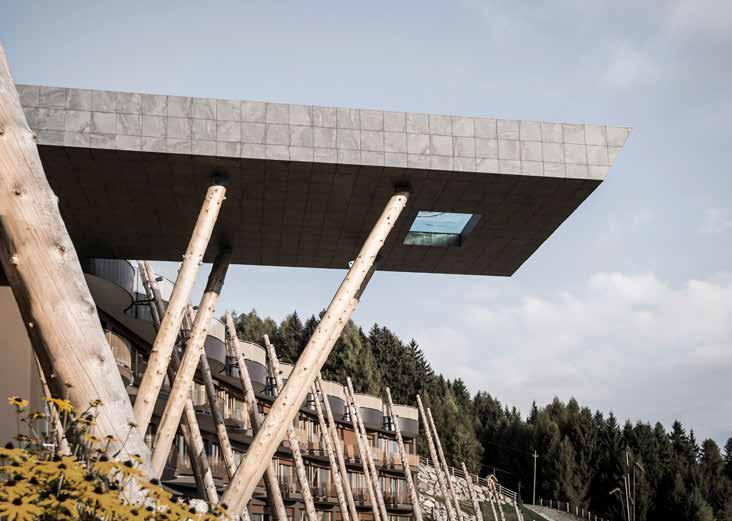
Zielona Gora, Poland
ARCUS-Consult
Abitazioni private, complessi residenziali I costi di manutenzione di edifici privati possono essere molto onerosi se legati a materiali che si deteriorano nel tempo. La scelta di una superficie trattata con Bios Self-Cleaning® può rivelarsi una valida alternativa.
Private homes, residential complexes
The maintenance costs for private buildings can be very high, if the materials used deteriorate over time. Choosing a surface with Bios SelfCleaning® treatment can offer a valid alternative.
Habitations privées, complexes résidentiels
Les coûts d’entretien des ouvrages privés peuvent être très onéreux s’ils sont liés à des matériaux qui se détériorent dans le temps. Choisir une surface traitée avec Bios Self-Cleaning® peut se révéler une solution alternative valide.
Private Haushalte und Wohnkomplexe
Die Wartungskosten für private Gebäude können sehr hoch sein, wenn sie mit Materialien verbunden sind, die sich mit der Zeit verschlechtern. Die Entscheidung für eine mit Bios Self-Cleaning® behandelte Oberfläche kann eine gute Alternative sein.
Flatmates
Ivry-sur-Seine, France

Wilmotte Jean-Michel
Sapphire
Berlin, Germany
Daniel libeskind, Studio Libeskind
© Photos: Jan Bitter
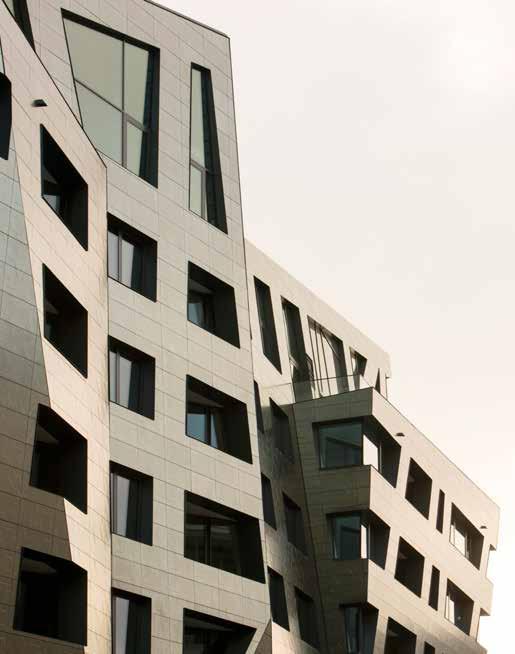

Un supporto concreto per architetti e progettisti
Practical support for architects and designers
Un support concret pour les architectes et les concepteurs
Konkrete Unterstützung für Architekten und Planer
L’esperienza maturata in oltre 60 anni di realizzazioni in tutto il mondo consente a Casalgrande Padana di mettere a disposizione dei professionisti un enorme bagaglio di conoscenze e tutte le informazioni e l’assistenza necessarie alla corretta progettazione, posa e manutenzione, dei suoi prodotti. Grazie a questa competenza l’azienda è aperta alla più ampia collaborazione con i progettisti per trasformare la superficie ceramica in un sistema integrato ed evoluto capace di rispondere alle più severe richieste in termini di qualità architettonica, livelli prestazionali, durabilità e sostenibilità.
VOCI DI CAPITOLATO
Bios Self-Cleaning®
Piastrelle in grès fine porcellanato antiusura e antimacchia, in prima scelta, come da norme UNI EN ISO 14411, con assorbimento d’acqua inferiore allo 0,1%. Resistenti al gelo e agli sbalzi termici, nessuna alterazione dei colori alla luce con esclusivo trattamento a base di biossido di titanio Bios Self-Cleaning® basato sulla tecnologia Hydrotect®, studiato appositamente per i rivestimenti di facciata esterni. Il trattamento Bios Self-Cleaning® è in grado di abbattere gli inquinanti di natura organica presenti nell’aria e di decomporre lo sporco che si deposita sulla superficie delle piastrelle, facendo in modo che venga rimosso facilmente dall’acqua piovana grazie alla sua super idrofilia.
The experience gained in over 60 years of operations all over the world allows Casalgrande Padana to offer professionals a huge amount of knowledge and all the information and assistance necessary for the correct design, installation and maintenance of its products. Thanks to these skills, the company is open to collaborating with designers in a whole range of ways, in order to turn ceramic surfaces into an integrated, advanced system able to respond to the most demanding requests in terms of architectural quality, performance levels, durability and sustainability.
TECHNICAL SPECIFICATIONS
Bios Self-Cleaning®
First-grade wear-resistant and stain-resistant fine porcelain stoneware tiles, compliant with the UNI EN ISO 14411 standard, with water absorption of less than 0.1%. Resistant to frost and thermal shock, with colours unaffected by light and an exclusive titanium-based Bios Self-Cleaning® treatment based on Hydrotect® technology, specifically studied for covering external façades. The Bios SelfCleaning® treatment is able to eliminate organic pollutants present in the air and to break down the dirt that settles on the surface of the tiles, so that it can easily be removed by rainwater, thanks to its superhydrophilic characteristics.
Grâce à l’expérience acquise au cours de plus de 60 ans de réalisations à travers le monde, Casalgrande Padana met à disposition des professionnels un énorme bagage de connaissances et toutes les informations et l’assistance nécessaires afin de concevoir, de poser et d’entretenir correctement ses produits. Grâce à ses compétences, l’entreprise s’ouvre à une profonde collaboration avec les concepteurs pour transformer la surface céramique en un système intégré et développé en mesure de répondre aux requêtes les plus strictes en termes de qualité architecturale, de niveaux de performances, de solidité et de durabilité.
RUBRIQUES DU CAHIER DES CHARGES
Bios Self-Cleaning® Carreaux en grès cérame fin, anti-usure et antitache, de premier choix, conformes à la norme UNI EN ISO 14411, avec absorption d’eau inférieure à 0,1 %. Résistants au gel et aux écarts thermiques, aucune altération des couleurs sous l’action de la lumière, avec traitement exclusif à base de dioxyde de titane Bios Self-Cleaning®, basé sur la technologie Hydrotect®, spécialement étudié pour les revêtements de façades. Le traitement Bios Self-Cleaning® est en mesure d’éliminer les polluants de nature organique présents dans l’air et de décomposer les saletés qui se déposent sur la surface des carreaux, en faisant en sorte qu’elles soient facilement éliminées par l’eau de pluie grâce à ses propriétés superhydrophiles.
Die in mehr als 60 Jahren bei Projekten auf der ganzen Welt gesammelte Erfahrung ermöglicht es Casalgrande Padana, Fachleuten einen enormen Wissensschatz und alle Informationen und Hilfestellungen zu bieten, die für die korrekte Planung, Installation und Wartung seiner Produkte erforderlich sind. Dank dieses Know-hows ist das Unternehmen offen für eine äußerst umfassende Zusammenarbeit mit Planern, um die keramische Oberfläche in ein integriertes und weiterentwickeltes System zu verwandeln, das den strengsten Anforderungen in Bezug auf architektonische Qualität, Leistungsniveau, Haltbarkeit und Nachhaltigkeit gerecht wird.
SPEZIFIKATIONEN
Bios Self-Cleaning®
Feinsteinzeugfliesen, verschleißfest und schmutzabweisend, erste Wahl, gemäß der Norm UNI EN ISO 14411 mit einer Wasseraufnahme von weniger als 0,1 %. Frost- und temperaturwechselbeständig, keine Farbveränderung bei Lichteinfall mit der exklusiven auf Titandioxid basierenden Bios Self-Cleaning®-Behandlung auf Grundlage der Hydrotect®-Technologie, die speziell für Außenfassadenverkleidungen entwickelt wurde. Die Bios Self-Cleaning®-Behandlung kann in der Luft vorhandene Schadstoffe organischer Natur abbauen und den auf der Fliesenoberfläche abgelagerten Schmutz zersetzen, sodass dieser dank der extrem hydrophilen Oberfläche leicht vom Regenwasser abgespült werden kann.
Domande e risposte
1
Che cos’è la tecnologia Hydrotect®?
Hydrotect® è un coating brevettato che viene applicato alle superfici ceramiche di Casalgrande Padana tramite il trattamento Bios Self-Cleaning®, in grado di abbattere gli inquinanti di natura organica presenti nell’aria e di decomporre lo sporco che si deposita sulla superficie dei rivestimenti di facciata esterni, rendendolo facilmente rimovibile dall’acqua piovana.
2
Cosa si intende per principali agenti inquinanti?
I NO x (ossidi e miscele di azoto), sottoprodotti dei processi di combustione generati dagli automezzi, dal riscaldamento domestico e da alcuni processi industriali, sono i principali inquinanti dell’atmosfera e rappresentano una minaccia concreta per la salute dell’uomo e dell’ambiente.
3
I NO3- liberati dalla reazione fotocatalitica sono nocivi per l’uomo?
No, i NO3- non sono in alcun modo sostanze nocive per l’uomo e gli esseri viventi, anzi concorrono alla purificazione dell’aria.
4
Lo sporco che si deposita al suolo è nocivo per l’ambiente?
No, lo sporco decomposto dall’ossigeno attivo durante la reazione fotocatalitica non è nocivo per l’ambiente. La formulazione di Bios Self-Cleaning® è infatti a base di biossido di titanio (TiO2), una sostanza del tutto naturale, tradizionalmente utilizzata come pigmento bianco e per confezionare additivi alimentari, dentifrici, prodotti cosmetici.
5 Il trattamento è subito attivo sulle lastre?
Grazie alla tecnologia integrata nel prodotto in maniera permanente, l’efficacia del trattamento Bios Self-Cleaning® è immediato, persiste nel tempo e non teme l’usura.
6 Il trattamento va riapplicato alle piastrelle dopo alcuni anni?
No, il trattamento è attivo per tutta la durata della vita della lastra.
7 La tecnologia si attiva anche di notte con luci artificiali?
No, la tecnologia Hydrotect® si attiva esclusivamente in presenza di luce solare.
8
Occorrono manutenzioni straordinarie per pulire le superfici?
Le prestazioni autopulenti di Bios Self-Cleaning® sono estremamente efficaci, ma è importante sottolineare che:
- NON sono in grado di rimuovere completamente i depositi che eccedono la proprietà autopulente, quali macchie che aderiscono alle facciate rapidamente, massicciamente e tenacemente, come i sigillanti al silicone;
- NON sono in grado di rimuovere ruggine ed efflorescenze;
- NON si attiva il processo autopulente in assenza di pioggia ed esposizione ai raggi UV.
9
Cosa si intende per composti organici e composti inorganici?
I depositi superficiali e le macchie che deteriorano le facciate degli edifici possono essere di natura organica e non organica. I depositi organici sono principalmente generati da oli e gas di scarico emessi da automobili, caldaie per riscaldamento e impianti industriali. Ai composti organici appartengono anche vernici, graffiti, sigillanti siliconici, così come depositi legati all’attività naturale di animali e insetti, quali alveari, ragnatele, nidi ecc. Nelle aree metropolitane, a causa della particolare concentrazione di queste condizioni a contorno, la maggior parte del deterioramento delle superfici è riconducibile a depositi di natura organica.
I depositi non organici, quali sabbia, fango, ruggine, polvere ed efflorescenze possono essere causati dalle specificità del contesto insediativo, così come dal deterioramento di alcuni elementi costruttivi dell’involucro o dell’edificio, come parti metalliche, intonaci, cementi ecc.
10
Su quale tipologia di macchia organica o non organica Bios Self-Cleaning® è efficace?
MACCHIE ORGANICHE
Macchia oleosa, polvere e fuliggine, gas di scarico: Efficace Sigillante al silicone, graffiti, vernice, alveari, ragnatele: Difficile da rimuovere completamente mediante l’effetto autopulente
MACCHIE NON ORGANICHE
Sabbia, fango: Efficace Ruggine, efflorescenze, iridescenze: Non efficace
11
Perché Bios Self-Cleaning® rimuove sabbia e fango automaticamente?
Sostanze inorganiche come sabbia e fango non aderiscono di per sé alla superficie della piastrella. Tuttavia, le macchie oleose operano come un adesivo per queste sostanze inorganiche. Bios Self-Cleaning® indebolisce la forza adesiva della macchia oleosa con le sue forti proprietà di decomposizione e queste macchie vengono rimosse via dall’acqua piovana che elimina quindi anche la sabbia e il fango.
12
Perché sigillanti al silicone e graffiti sono difficili da rimuovere con l’effetto autopulente?
La loro potente forza adesiva supera la proprietà autopulente di Bios Self-Cleaning® Inoltre, deviano i raggi UV dalla superficie delle piastrelle, pertanto è difficile che su tale superficie si generi l’ossigeno attivo.
13
Perché ruggine ed efflorescenze NON vengono lavate via dall’effetto autopulente?
Se ruggine ed efflorescenze aderiscono alla superficie delle piastrelle grazie all’ausilio di sostanze intermedie quali macchie e depositi oleosi, Bios Self-Cleaning® è in grado di rimuoverle. Se invece aderiscono direttamente, le proprietà di decomposizione di Bios Self-Cleaning® NON sono efficaci su queste sostanze inorganiche.
14
Bisogna seguire particolari accorgimenti per la posa dei prodotti Bios Self-Cleaning®?
La corretta realizzazione di un sistema di facciata ventilata, così come di un tradizionale rivestimento in ceramica degli involucri, richiede un know-how specializzato. La Divisione Engineering di Casalgrande Padana è in grado di offrire assistenza, competenza e soluzioni sviluppate ad hoc, per affrontare in modo corretto la realizzazione del sistema di involucro in tutte le fasi del percorso progettuale: dalla stratificazione dei componenti alle sottostrutture, dai sistemi di fissaggio ai raccordi tra gli elementi costruttivi, dai particolari costruttivi alle soluzioni dei dettagli architettonici.
15
Su quali prodotti è possibile applicare il trattamento Bios Self-Cleaning®?
Bios Self-Cleaning® è disponibile su richiesta per tutte le serie a catalogo di Casalgrande Padana, compresi i prodotti “on demand”.
1
What is Hydrotect® technology?
Hydrotect® is a patented coating that is applied to Casalgrande Padana ceramic surfaces with the Bios Self-Cleaning®, treatment, able to eliminate organic pollutants present in the air and to break down the dirt that settles on the surface of the tiles, so that it can easily be removed by rainwater.
2 What are the main polluting agents?
NO x (nitrogen oxides and compounds), subproducts of the combustion processes generated by motor vehicles, domestic heating and a number of industrial processes, are the main air pollutants, and pose a real threat to human health and the environment.
3 Are the NO3- released by the photocatalytic reaction harmful to humans?
No, NO3- are in no way harmful to humans and living beings; in fact, they help purify the air.
4
Is the dirt that settles on the ground harmful to the environment?
No, the dirt broken down by the active oxygen during the photocatalytic reaction is not harmful to the environment. The Bios Self-Cleaning® formula is based on titanium dioxide (TiO2), a completely natural substance traditionally used as a white pigment and to make food additives, toothpaste and cosmetics.
5
Is the treatment immediately active on the tiles?
Because the technology is permanently integrated into the product, the Bios SelfCleaning® treatment is immediately effective, lasting and unaffected by wear and tear.
6
Does the treatment need to be reapplied to the tiles after a number of years?
No, the treatment remains active as long as the tile lasts.
7 Is the technology also activated at night, with artificial light?
No, Hydrotect® technology is activated only in the presence of sunlight.
8
Is extraordinary maintenance required to clean the surfaces?
The self-cleaning performance of Bios Self-Cleaning® is extremely effective, but it is important to note that:
- it CANNOT remove deposits that are beyond its self-cleaning abilities, such as stains that adhere rapidly, massively and strongly to façades, such as silicone sealants;
- it CANNOT remove rust and efflorescence;
- the self-cleaning process is NOT activated without rain and exposure to UV rays .
9
What is meant by organic and inorganic compounds?
The surface deposits and stains that cause building façades to deteriorate can be organic or inorganic. Organic deposits are mainly caused by oils and exhaust gases from motor vehicles, boilers for heating and industrial systems. Organic compounds also include paints and varnishes, graffiti, silicone sealants and deposits linked to the natural activity of animals and insects, such as hives, spider’s webs, nests, etc. In metropolitan areas, because of the particular concentration of these conditions in the environment, most surface deterioration is caused by deposits of an organic nature. Non-organic deposits, such as sand, mud, rust, dust and efflorescence can be caused by the specific conditions of the environment, as well as the deterioration of a number of construction elements of the building or the building envelope, such as metal parts, plaster, cement, etc.
10
On which kinds or organic or non-organic stains is Bios Self-Cleaning® effective?
ORGANIC STAINS
Oily stains, dust and soot, exhaust gases: Effective Silicone sealants, graffiti, paint/varnish, hives, spider’s webs: Difficult to remove completely with the self-cleaning effect
NON-ORGANIC STAINS
Sand, mud: Effective Rust, efflorescence, iridescence: Not effective
11
Why does Bios Self-Cleaning® automatically remove sand and mud?
Inorganic substances such as sand and mud do not adhere to the tile surface as such. However, oily stains function as an adhesive for these inorganic substances. Bios Self-Cleaning® weakens the adhesive strength of the oily stain with its impressive decomposing properties, and these stains are removed by rainwater, which thus also eliminates the sand and mud.
12
Why are silicone sealants and graffiti difficult to remove with the self-cleaning effect?
Their adhesive power is stronger than the self-cleaning properties of Bios Self-Cleaning®
In addition, they deflect the UV rays from the surface, so active oxygen is unlikely to be generated on the surface.
13
Why are rust and efflorescence NOT washed away by the self-cleaning effect?
If rust and efflorescence adhere to the surface of the tiles with the help of intermediate substances such as stains and oily deposits, Bios Self-Cleaning® is able to remove them; if they adhere directly, the decomposing properties of Bios Self-Cleaning® will NOT be effective on these inorganic substances.
14
Are there any particular steps to be followed for installing Bios Self-Cleaning® products?
Specialised know-how is required to create a ventilated façade properly, and to install traditional ceramic covering on cladding.
Casalgrande Padana’s Engineering Division is able to offer assistance, skills and specifically developed solutions, in order to create the cladding system correctly at every stage of the project process: from the stratification of the components to the substructures, the system for fixing the construction elements to the joints, as well as building details and solutions for architectural details.
15
What products can the Bios Self-Cleaning® treatment be applied to?
Bios Self-Cleaning® is available on request for all the series in the Casalgrande Padana catalogue, including “on demand” products.
Questions et réponses
1
Qu’est-ce que la technologie Hydrotect® ?
Hydrotect® est un revêtement breveté appliqué sur les surfaces céramiques de Casalgrande Padana par l’intermédiaire du traitement Bios Self-Cleaning®. Il est en mesure d’éliminer les polluants de nature organique présents dans l’air et de décomposer les saletés qui se déposent sur la surface des revêtements de façades et de les éliminer facilement grâce à l’eau de pluie.
2 Qu’entend-on par principaux agents polluants ?
Les NO x (oxydes et mélanges d’azote), sous-produits des processus de combustion émis par les véhicules, le chauffage domestique et certains procédés industriels, sont les principaux polluants de l’air et représentent une menace concrète pour la santé de l’homme et de l’environnement.
3 Les NO3- libérés par la réaction photocatalytique sont-ils nocifs pour l’homme ?
Non, les NO3- ne sont aucunement nocifs pour l’homme et les êtres vivants, au contraire, ils contribuent à purifier l’air.
4 Les saletés qui se déposent sur le sol sont-elles nocives pour l’environnement ?
Non, les saletés décomposées par l’oxygène actif au cours de la réaction photocatalytique ne sont pas nocives pour l’environnement. La formule de Bios Self-Cleaning® est en effet composée de dioxyde de titane (TiO2), une substance totalement naturelle, traditionnellement utilisée comme pigment blanc et pour produire des additifs alimentaires, des dentifrices et des produits cosmétiques.
5
Le traitement est-il immédiatement actif sur les dalles ?
Grâce à la technologie intégrée dans le produit de façon permanente, l’efficacité du traitement Bios Self-Cleaning® est immédiate, se poursuit dans le temps et résiste à l’usure.
6 Après quelques années, le traitement doit-il être réappliqué sur les dalles ?
Non, le traitement est actif pour toute la durée de vie de la dalle.
7
La technologie s’active-t-elle également de nuit avec des lumières artificielles ?
Non, la technologie Hydrotect® s’active exclusivement avec la lumière du soleil.
8
Un entretien exceptionnel estil nécessaire pour nettoyer les surfaces ?
Les performances autonettoyantes de Bios Self-Cleaning® sont extrêmement efficaces, mais il convient de souligner que :
- elles NE sont PAS en mesure d’éliminer totalement les dépôts allant au-delà de sa capacité autonettoyante, tels que les taches qui adhèrent aux façades de façon rapide, massive et tenace comme les colles au silicone ;
- elles NE sont PAS en mesure d’éliminer la rouille et les efflorescences ;
- le processus d’autonettoyage NE s’active PAS en absence de pluie et d’exposition aux rayons UV.
9
Qu’entend-on par composés organiques et composés inorganiques ?
Les dépôts superficiels et les taches qui détériorent les façades des bâtiments peuvent être de nature organique et non organique. Les dépôts organiques sont principalement générés par les huiles et les gaz d’échappement émis par les véhicules, les chaudières et les installations industrielles. Les composés organiques regroupent également les peintures, les graffitis, les colles au silicone ainsi que les dépôts liés à l’activité naturelle des animaux et des insectes, tels que les ruches, les toiles d’araignée, les nids, etc. Dans les milieux urbains, à cause de la concentration particulière de ces conditions accessoires, la détérioration des surfaces est la plupart du temps liée à des dépôts de nature organique. Les dépôts non organiques tels que le sable, la boue, la rouille, la poussière et les efflorescences peuvent être causés par les spécificités du contexte d’implantation, ainsi que par la détérioration de certains éléments de construction de l’enveloppe ou du bâtiment, comme les parties métalliques, les enduits, les ciments, etc.
10
Sur quel type de tache organique ou non organique Bios Self-Cleaning® est-il efficace ?
TACHES ORGANIQUES
Tache graisseuse, poussière et suie, gaz d’échappement : Efficace
Colle au silicone, graffitis, peinture, ruches, toiles d’araignée : Difficile à éliminer complètement au moyen de l’action autonettoyante
TACHES NON ORGANIQUES
Sable, boue : Efficace Rouille, efflorescences, irisations : Inefficace
11
Pourquoi Bios Self-Cleaning® élimine automatiquement le sable et la boue ?
Les substances inorganiques comme le sable et la boue n’adhèrent pas en tant que telles à la surface de la dalle. Toutefois, les taches graisseuses agissent comme une sorte d’adhésif pour ces substances inorganiques. Grâce à ses fortes propriétés de décomposition, Bios Self-Cleaning® affaiblit la force d’adhérence de la tache graisseuse et ces taches sont éliminées par l’eau de pluie qui supprime donc également le sable et la boue.
12
Pourquoi les colles au silicone et les graffitis sont-ils difficiles à éliminer avec l’effet autonettoyant ?
Leur puissante force d’adhérence dépasse la propriété autonettoyante de Bios Self-Cleaning® De plus, ils dévient les rayons UV de la surface des dalles ; il est par conséquent difficile que l’oxygène actif se génère sur de telles surfaces.
13
Pourquoi la rouille et les efflorescences NE sont PAS éliminées par l’effet autonettoyant ?
Si la rouille et les efflorescences adhèrent à la surface des dalles par l’intermédiaire de substances telles que des taches et des dépôts graisseux, Bios Self-Cleaning® est en mesure de les éliminer. En revanche, si elles adhèrent directement, les propriétés de décomposition de Bios Self-Cleaning® NE sont PAS efficaces sur ces substances inorganiques.
14
Faut-il prendre des précautions particulières pour poser les produits Bios Self-Cleaning® ?
Pour réaliser correctement un système de façade ventilée ou pour créer une enveloppe avec un traditionnel revêtement en céramique, il faut un savoir-faire spécial. La Division Ingénierie de Casalgrande Padana est en mesure d’offrir son assistance, ses compétences et des solutions développées ad hoc pour aborder correctement la réalisation du système d’enveloppe au cours de toutes les phases du parcours conceptuel : de la stratification des composants aux sousstructures, des systèmes de fixation aux raccords entre les éléments de construction, des détails de construction aux solutions des détails architecturaux.
15
Sur quels produits est-il possible d’appliquer le traitement Bios Self-Cleaning® ?
Bios Self-Cleaning® est disponible sur demande pour toutes les collections présentes dans le catalogue de Casalgrande Padana, y compris les produits personnalisés.
Fragen und Antworten
1
Was ist die Hydrotect®Technologie?
Hydrotect® ist eine patentierte Beschichtung, die auf die keramischen Oberflächen von Casalgrande Padana mittels der Bios Self-Cleaning®-Behandlung aufgetragen wird. Sie kann die in der Luft vorhandenen organischen Schadstoffe abbauen und den Schmutz zersetzen, der sich auf der Oberfläche von Außenfassadenverkleidungen ablagert, sodass dieser anschließend leicht durch das Regenwasser abgespült werden kann.
2
Was versteht man unter „Hauptschadstoffen“?
NO x (Stickstoffoxide und -gemische), Nebenprodukte von Verbrennungsprozessen, die durch Fahrzeuge, Wohnungsheizungen und einige industrielle Prozesse entstehen, sind die Hauptschadstoffe in der Atmosphäre und stellen eine echte Bedrohung für die menschliche Gesundheit und die Umwelt dar.
3 Ist das durch die photokatalytische Reaktion freigesetzte NO3- für den Menschen schädlich?
Nein, bei NO3- handelt es sich in keiner Weise um einen für Menschen und Lebewesen schädlichen Stoff, im Gegenteil, es trägt zur Reinigung der Luft bei.
4 Ist auf dem Boden abgelagerter Schmutz schädlich für die Umwelt?
Nein, der durch den aktiven Sauerstoff während der photokatalytischen Reaktion zersetzte Schmutz ist nicht umweltschädlich. Denn die Zusammensetzung von Bios Self-Cleaning® basiert auf Titandioxid (TiO2), einer völlig natürlichen Substanz, die traditionell als Weißpigment und zur Herstellung von Lebensmittelzusatzstoffen, Zahnpasten und Kosmetikprodukten verwendet wird.
5 Ist die Behandlung sofort auf den Platten aktiv?
Dank der fest in das Produkt integrierten Technologie ist die Wirksamkeit der Bios Self-Cleaning®-Behandlung unmittelbar gegeben, hält über die Zeit an und wird nicht durch Abnutzung beeinträchtigt.
6
Sollte die Behandlung nach einigen Jahren erneut auf die Fliesen aufgetragen werden?
Nein, die Behandlung ist während der gesamten Lebensdauer der Platte wirksam.
7
Aktiviert sich die Technologie auch bei Nacht mit Kunstlicht?
Nein, die Hydrotect®-Technologie wird nur bei Sonneneinstrahlung aktiviert.
8
Müssen die Oberflächen besonders instand gehalten und gereinigt werden?
Die selbstreinigende Eigenschaft von Bios Self-Cleaning® ist äußerst effektiv, aber es ist wichtig, zu betonen, dass:
- sie NICHT in der Lage ist, Ablagerungen vollständig zu entfernen, die über die Selbstreinigungseigenschaft hinausgehen, wie z. B. Verschmutzungen, die sich schnell, massiv und hartnäckig an der Fassade festsetzen, wie z. B. Silikondichtmittel;
- sie NICHT in der Lage ist, Rost und Ausblühungen zu entfernen;
- der Selbstreinigungsprozess bei fehlendem Regen und UV-Bestrahlung NICHT aktiviert wird.
9
Was versteht man unter organischen und anorganischen Verbindungen?
Ablagerungen und Flecken auf der Oberfläche, die das Erscheinungsbild von Gebäudefassaden beeinträchtigen, können organischer und anorganischer Natur sein. Organische Ablagerungen entstehen vor allem durch Öle und Abgase, die von Autos, Heizungen und Industrieanlagen ausgestoßen werden. Zu den organischen Verbindungen gehören auch Anstriche, Graffiti, Silikondichtmittel sowie Ablagerungen, die mit der natürlichen Aktivität von Tieren und Insekten verbunden sind, wie z. B. Bienenstöcke, Spinnennetze, Vogelnester usw. In Ballungsräumen ist aufgrund dessen, dass derartige Randbedingungen besonders konzentriert auftreten, der größte Teil der Oberflächenverschlechterung auf Ablagerungen organischer Natur zurückzuführen. Nichtorganische Ablagerungen wie Sand, Schlamm, Rost, Staub und Ausblühungen können durch die spezifischen Gegebenheiten von Siedlungen sowie durch den Verfall einiger Konstruktionselemente der Gebäudehülle oder des Gebäudes selbst verursacht werden, z. B. Metallteile, Verputz, Zement, usw.
10
Bei welcher Art von organischen oder nicht-organischen Flecken ist Bios Self-Cleaning® wirksam?
ORGANISCHE FLECKEN
Ölige Flecken, Staub und Ruß, Auspuffgase: Wirksam
Silikondichtmittel, Graffiti, Lack, Bienenstöcke, Spinnweben: Nur schwer vollständig durch den Selbstreinigungseffekt zu entfernen
NICHT-ORGANISCHE FLECKEN
Sand, Schlamm: Wirksam
Rost, Ausblühungen, Anlauffarben: Nicht wirksam
11
Warum entfernt Bios Self-Cleaning® Sand und Schlamm automatisch?
Anorganische Stoffe wie Sand und Schlamm haften nicht von sich aus an der Fliesenoberfläche. Allerdings wirken ölige Verschmutzungen wie ein Klebstoff für diese anorganischen Substanzen. Bios SelfCleaning® schwächt mit seinen starken Zersetzungseigenschaften die Adhäsionskraft der öligen Verschmutzungen, sodass diese Flecken und damit auch der Sand und Schlamm durch Regenwasser abgespült werden.
12
Warum lösen sich Silikondichtmittel und Graffiti durch den Selbstreinigungseffekt nur schwer?
Ihre starke Haftkraft übertrifft die selbstreinigende Fähigkeit von Bios Self-Cleaning®
Außerdem werden durch sie die UV-Strahlen von der Fliesenoberfläche abgeleitet, sodass die Bildung von aktivem Sauerstoff auf dieser erschwert wird.
13
Warum werden Rost und Ausblühungen NICHT durch den Selbstreinigungseffekt abgewaschen?
Wenn Rost und Ausblühungen durch dazwischenliegende Substanzen wie ölige Flecken und Ablagerungen an der Fliesenoberfläche haften, kann Bios SelfCleaning® diese entfernen.
Wenn diese hingegen direkt anhaften, sind die Zersetzungseigenschaften von Bios Self-Cleaning® bei diesen anorganischen Substanzen NICHT wirksam.
14
Muss ich bei der Verlegung von Bios Self-Cleaning®-Produkten besondere Vorsichtsmaßnahmen beachten?
Die korrekte Ausführung eines hinterlüfteten Fassadensystems, wie auch einer traditionellen Einhausung mit keramischen Materialien, erfordert spezielles Know-how. Die Ingenieurabteilung von Casalgrande Padana kann Unterstützung, Fachwissen und Ad-hocLösungen anbieten, um die Umsetzung des Hüllensystems in allen Phasen des Projektierungsprozesses richtig anzugehen: von der Schichtung der Komponenten bis zu den Unterkonstruktionen, von den Befestigungssystemen bis zu den Verbindungen zwischen den Bauelementen, von den Konstruktionsdetails bis zu architektonischen Detaillösungen.
15
Bei welchen Produkten kann die Bios Self-Cleaning®-Behandlung angewendet werden?
Bios Self-Cleaning® ist auf Anfrage für alle im Katalog von Casalgrande Padana enthaltenen Serien erhältlich, auch für „On-Demand“-Produkte.
Glossario
A
Acidificazione
Si definisce acidificazione dell’ambiente il fenomeno che consegue all’aumento di concentrazione di sostanze acide (principalmente ossidi di azoto ed anidride solforica) nei vari comparti dell’ambiente: atmosfera, acque superficiali e profonde, suoli, ecc. Esso può essere di natura episodica e locale se dovuto a fattori naturali o di natura continua e globale se dovuto all’immissione nell’atmosfera di ossidi di azoto ed anidride solforica da parte di sistemi di combustione industriali (centrali termoelettriche e altri impianti) e civili (riscaldamento domestico e traffico veicolare). Dall’atmosfera queste sostanze possono depositarsi sui manufatti, sulla vegetazione e sul suolo, sotto forma di piogge acide, dando luogo a notevoli effetti dannosi. In particolare, l’acidificazione del suolo si ritiene concorra ad indebolire la resistenza delle specie vegetali presenti e ad arricchire le acque sotterranee di elementi anche potenzialmente dannosi per la vita animale.
Antinquinamento
Che previene o combatte l’inquinamento dell’aria, delle acque, del suolo e ne diminuisce gli effetti nocivi.
Autopulente
Che si pulisce in modo autonomo, che compie automaticamente la propria pulitura.
C
Coating
Rivestimento, un sottile strato di una sostanza depositato su una superficie.
D
Decomposizione
La decomposizione è il processo di deterioramento dei corpi (o di parte di essi) di organismi precedentemente viventi, che si scompongono nelle forme più semplici della materia dopo la loro morte.
Dilavare
Azione erosiva, con asportazione del materiale eroso, esercitata dall’acqua. Il dilavamento differisce da altre azioni erosive perché esercita la propria azione su tutta la superficie, degradandola.
F
Facciata ventilata
La facciata o parete ventilata è un sistema costruttivo “a secco” composto da un rivestimento vincolato all’edificio tramite dispositivi di sospensione e di fissaggio di tipo meccanico. Il sistema prevede in genere la realizzazione di un’intercapedine opportunamente dimensionata che permetta l’inserimento di un pannello termoisolante a contatto con la parete dell’edificio e la creazione di una camera per la circolazione ascensionale dell’aria (effetto camino).
Fotocatalisi
La fotocatalisi è un metodo catalitico applicato a reazioni fotochimiche, condotto mediante l’ausilio di un catalizzatore che esplica la sua azione quando irradiato con luce di opportuna lunghezza d’onda. I fotocatalizzatori classici sono rappresentati da composti metallici, il più attivo e più utilizzato è il biossido di titanio (TiO2).
O
Ossidazione
L’ossidazione in chimica si ha quando un elemento chimico subisce una sottrazione di elettroni, che si traduce nell’aumento del suo numero di ossidazione. Il nome ossidazione è stato inizialmente dato alla reazione tra un metallo che si combina con l’ossigeno per dare il corrispondente ossido: il metallo subisce una sottrazione di elettroni da parte dell’ossigeno, poiché quest’ultimo è più elettronegativo di qualsiasi metallo.
Ossigeno attivo
L’ossigeno attivo è un elemento chimico che, grazie alle notevoli proprietà disinfettanti e pulenti che dimostra quando reagisce con altre sostanze, è utilizzato spesso all’interno di prodotti dedicati all’igiene personale, del bucato e di tutta la casa.
Il suo uso è frequente anche nei trattamenti di pulitura delle piscine e insieme al cloro è uno dei metodi più efficaci per garantire la disinfezione dell’acqua. R
Raggi UV
In fisica la radiazione ultravioletta (UV o raggi ultravioletti o luce ultravioletta) è un intervallo della radiazione elettromagnetica, appartenente allo spettro elettromagnetico, con lunghezza d’onda immediatamente inferiore alla luce visibile dall’occhio umano e immediatamente superiore a quella dei raggi X.
Il termine significa “oltre il violetto”, poiché il violetto è il colore con frequenza più elevata nello spettro visibile dall’uomo (quindi, con la lunghezza d’onda più corta). La radiazione ultravioletta costituisce circa il 10% della luce emessa dal Sole.
S
Superidrofilia
La bagnatura o bagnabilità è il processo che porta a contatto un liquido ed una superficie solida. Ciò avviene in presenza di una fase gassosa o di un’altra fase liquida, immiscibile con la prima, descrivibili in termini generali come fluidi. Il sistema è descritto dall’angolo di contatto, definito come l’angolo formato dalla tangente all’interfaccia liquido-fluido, e dalla tangente alla superficie solida, in corrispondenza della linea di contatto tra le tre fasi. Un basso angolo di contatto (<90°) descrive una situazione in cui il solido è parzialmente bagnato dal liquido (idrofilicità, nel caso dell’acqua), mentre un elevato angolo di contatto (>90°) descrive una situazione in cui il solido è poco bagnato (idrofobicità, nel caso dell’acqua). Essa è una proprietà che influenza l’ottenimento sia di superfici superidrofobiche che superidrofiliche e viene valutata mediante prove di angolo di contatto. La superidrofilia, che letteralmente significa “forte affinità con l’acqua”, conferisce alla superficie massima bagnabilità, grazie all’angolo di contatto tra la goccia e la superficie inferiore a 5°, con formazione di un film continuo sottile; al contrario in presenza di superidrofobicità (“forte repulsione per l’acqua”), per angoli di contatto maggiori di 150°, non si ha alcuna bagnabilità, favorendo la formazione di gocce isolate.
Glossary
A
Acidification
Acidification of the environment is the phenomenon that occurs following an increase in the concentration of acid substances (mainly nitrogen oxides and sulphur trioxide) in the various areas of the environment: atmosphere, surface and deep waters, soil, etc. It can be episodic and local in nature if due to natural factors, or continuous and global if due to the release into the atmosphere of nitrogen oxides and sulphur trioxide by industrial (electric heating plants and other systems) and civil (domestic heating and vehicular traffic) systems. From the atmosphere, these substances can settle on buildings, on the vegetation and on the soil, in the form of acid rain, giving rise to significant harmful effects. Specifically, soil acidification is believed to contribute to weakening the resistance of plant species present, and releasing into underground water elements that are potentially dangerous for animal life.
Active oxygen
Active oxygen is a chemical element which, thanks to the significant disinfecting and self-cleaning properties it demonstrates when it reacts with other substances, is often used in personal hygiene, laundry and home cleaning products. It is also frequently used in cleaning treatments for swimming pools, and, together with chlorine, it is one of the most effective methods to guarantee the disinfection of the water.
Anti-pollution
Able to prevent or combat pollution of the air, water and soil and reduce its harmful effects.
C Coating
Covering, a thin layer of a substance placed on a surface.
Decomposition
Decomposition is the process by which the bodies, or parts of the bodies, of previously living organisms deteriorate and break down into the most simple forms of matter after death. O
Oxidation
In chemistry, oxidation occurs when a chemical elements loses electrons, which increases its oxidation number. The term oxidation was initially applied to the reaction between a metal that combines with oxygen to form the corresponding oxide: the metal uses electrons as a result of the oxygen, because oxygen is more electronegative than any metal.
P
Photocatalysis
Photocatalysis is a catalytic method applied to photochemical reactions, conducted with the aid of a catalytic converter activated when irradiated with light of the appropriate wavelength. Classic photocatalytic converters are metal compounds; the most active and widely used is titanium dioxide (TiO2).
S
Self-cleaning
Able to clean itself.
Superhydrophilicity
Wetting is the process that brings a liquid into contact with a solid surface. This occurs in the presence of a gaseous phase or another liquid phase, immiscible with the first, which in general terms can be described as fluids. The system is described by the contact angle, defined as the angle formed by the tangent at the liquid-fluid interface, and by the tangent at the solid surface, corresponding to the line of contact between the three phases. A low contact angle (<90°) indicates a situation in which the solid is partially wetted by the liquid (hydrophilicity, in the case of water), while a high contact angle (>90°) indicates a situation in which the solid is wetted to a limited extent (hydrophobicity, in the case of water). It is a property that influences the ability to obtain both superhydrophobic and superhydrophilic surfaces, and is evaluated using contact angle tests. Superhydrophilicity, which literally means “a strong affinity with water”, gives the surface maximum wettability, thanks to a contact angle of less than 5° between the drops and the surface, with the formation of a continuous thin film; where superhydrophobicity is present (“a strong repulsion for water”), because contact angles are superior to 150°, there is no wettability, making the formation of isolated drops more likely.
UV rays
In physics, ultraviolet radiation (UV or ultraviolet rays or ultraviolet light) is an interval of electromagnetic radiation, with a wavelength immediately inferior to light visible to the human eye and immediately superior to that of X rays. The term means “beyond violet”, because violet is the colour with the highest frequency on the spectrum visible to humans (therefore, with the shortest wavelength). Ultraviolet radiation makes up about 10% of the light emitted by the sun.
V
Ventilated façade
Ventilated façades or walls are a “dry” construction system composed of a covering bound to a building using mechanical-type suspension or fixing devices. The system generally comprises a suitably sized gap for the insertion of a heat insulating panel in contact with the wall of a building and the creation of a chamber for ascensional ventilation (the stack effect).
W
Washout
Erosive action carried out by water, which removes the eroded material. Washout differs from other erosive actions because it acts over the whole surface, breaking it down.
Glossaire
A
Acidification
On définit acidification de l’environnement le phénomène qui dérive de l’augmentation de la concentration de substances acides (principalement des oxydes d’azote et du trioxyde de soufre) dans les différents compartiments de l’environnement : atmosphère, eaux de surface et eaux souterraines, sols, etc. Ce phénomène peut être épisodique et local s’il est dû à des facteurs naturels, ou continu et global s’il est généré par l’introduction dans l’atmosphère d’oxydes d’azote et de trioxyde de soufre de la part de systèmes de combustion industriels (centrales thermoélectriques et autres installations) et civils (chauffage domestique et circulation des véhicules). À partir de l’atmosphère, ces substances peuvent se déposer sur les ouvrages, la végétation et le sol, sous la forme de pluies acides, ce qui entraîne d’importants effets nocifs. On estime notamment que l’acidification du sol contribue à affaiblir la résistance des espèces végétales présentes et à enrichir les eaux souterraines d’éléments potentiellement dangereux pour la vie animale.
Antipollution
Qui prévient ou lutte contre la pollution de l’air, des eaux, du sol et en réduit les effets nocifs.
Autonettoyant
Qui se nettoie de façon autonome, qui réalise automatiquement son propre nettoyage.
D
Décomposition
La décomposition est le processus de détérioration des corps (ou de parties de ceux-ci) d’organismes préalablement vivants, qui se décomposent dans les formes les plus simples de la matière après leur mort.
F
Façade ventilée
La façade ou paroi ventilée est un système de construction « à sec » composé d’un revêtement solidarisé au bâtiment à l’aide de dispositifs de suspension et de fixation de type mécanique. Ce système prévoit habituellement la réalisation d’un interstice opportunément dimensionné qui permet d’introduire un panneau thermo-isolant au contact de la façade du bâtiment et de créer une chambre pour la circulation ascensionnelle de l’air (effet cheminée).
Oxydation
En chimie, l’oxydation est une réaction au cours de laquelle un élément chimique perd un ou plusieurs électrons, ce qui se traduit par une augmentation de son nombre d’oxydation. Le terme oxydation a été initialement donné à la réaction entre un métal qui se combine avec l’oxygène pour donner l’oxyde correspondant : le métal subit une perte d’électrons de la part de l’oxygène, étant donné que ce dernier est plus électronégatif que le métal, quel qu’il soit.
Oxygène actif
L’oxygène actif est un élément chimique qui, grâce à ses remarquables propriétés désinfectantes et nettoyantes lorsqu’il réagit avec d’autres substances, est souvent utilisé à l’intérieur de produits dédiés à l’hygiène personnelle, à la lessive et à l’ensemble de la maison. Il est aussi fréquemment utilisé dans les traitements de nettoyage des piscines et, avec le chlore, il est l’une des méthodes les plus efficaces pour garantir la désinfection de l’eau.
P
Photocatalyse
La photocatalyse est une méthode catalytique appliquée aux réactions photochimiques, réalisée à l’aide d’un catalyseur qui exerce son action lorsqu’il est irradié avec une lumière d’une longueur d’onde appropriée. Les photocatalyseurs classiques sont représentés par des composés métalliques ; le plus actif et le plus utilisé est le dioxyde de titane (TiO2).
R
Rayons UV
En physique, le rayonnement ultraviolet (UV ou rayons ultraviolets ou « lumière noire ») est un intervalle de la radiation électromagnétique appartenant au spectre électromagnétique, de longueur d’onde immédiatement inférieure à celle de la lumière visible par l’humain et immédiatement supérieure à celle des rayons X. Le terme signifie « au-delà du violet », le violet étant la couleur avec la fréquence la plus élevée dans le spectre visible par l’humain (donc, avec la longueur d’onde la plus courte). Le rayonnement ultraviolet constitue environ 10 % de la lumière émise par le Soleil.
Revêtement
Fine couche de substance déposée sur une surface.
Raviner
Action érosive exercée par l’eau, qui emporte le matériau érodé. Le ravinement diffère d’autres actions érosives car il exerce son action sur toute la surface, en la dégradant.
S
Superhydrophilie
Le mouillage ou mouillabilité est le processus qui fait entrer en contact un liquide et une surface solide. Cela a lieu en présence d’une phase gazeuse ou d’une autre phase liquide, non miscible avec la première, que l’on peut décrire en général comme des fluides. Le système est décrit à partir de l’angle de contact, défini comme l’angle formé par la tangente à l’interface liquide-fluide, et de la tangente à la surface solide, au niveau de la ligne de contact des trois phases. Un angle de contact faible (<90°) décrit une situation où le solide est partiellement mouillé par le liquide (caractère hydrophile, dans le cas de l’eau), tandis qu’un angle de contact élevé (>90°) décrit une situation où le solide est peu mouillé (caractère hydrophobe, dans le cas de l’eau). Cette propriété a une incidence aussi bien sur l’obtention de surfaces superhydrophobes que superhydrophiles et est évaluée à l’aide de tests d’angle de contact. La superhydrophilie, qui signifie littéralement « forte affinité avec l’eau », donne à la surface une mouillabilité maximale, grâce à l’angle de contact entre la goutte et la surface inférieur à 5°, avec la formation d’un film continu de fine épaisseur ; au contraire, en présence de superhydrophobie (« forte répulsion pour l’eau »), avec des angles de contact supérieurs à 150°, aucune mouillabilité ne se crée, ce qui favorise la formation de gouttes isolées.
Glossar
A
Aktiver Sauerstoff
Aktiver Sauerstoff ist ein chemisches Element, das dank seiner bemerkenswerten desinfizierenden und reinigenden Eigenschaften, die es bei der Reaktion mit anderen Stoffen zeigt, häufig in Körperpflege-, Waschmittel- und Hauspflegeprodukten eingesetzt wird. Er wird auch häufig bei der Schwimmbadreinigung eingesetzt und ist zusammen mit Chlor eine der effektivsten Methoden zur Wasserdesinfektion.
Auswaschen
Erosive Wirkung des Wassers mit Abtragung von erodiertem Material. Die Auswaschung unterscheidet sich von anderen erosiven Einwirkungen, weil sie auf die gesamte Oberfläche wirkt und diese schädigt.
B
Beschichtung
Bei einer Beschichtung wird eine dünne Schicht einer Substanz auf eine Oberfläche aufgebracht.
E
Extrem hydrophil
Als Benetzung oder Benetzbarkeit bezeichnet man den Vorgang, bei dem eine Flüssigkeit und eine feste Oberfläche in Kontakt gebracht werden. Dies geschieht bei Vorliegen einer gasförmigen Phase oder einer anderen flüssigen, mit der ersten nicht mischbaren Phase, die allgemein als Fluide bezeichnet werden können. Das System wird durch den Kontaktwinkel beschrieben, der als der Winkel definiert ist, der durch die Tangente an die Flüssigkeits-Fluid-Grenzfläche und die Tangente an die Festkörperoberfläche an der Kontaktlinie zwischen den drei Phasen entsteht.
Ein niedriger Kontaktwinkel (<90°) beschreibt eine Situation, in der der Festkörper von der Flüssigkeit teilweise benetzt wird (Hydrophilie, im Falle von Wasser), während ein hoher Kontaktwinkel (>90°) eine Situation beschreibt, in der der Festkörper nur wenig benetzt wird (Hydrophobie, im Falle von Wasser). Es handelt sich um eine Eigenschaft, die das Erreichen von sowohl extrem hydrophoben (wasserabweisenden) als auch extrem hydrophilen (wasseranziehenden) Oberflächen beeinflusst und durch Kontaktwinkeltests bewertet wird. Die extreme Hydrophilie, die wörtlich übersetzt „starke Affinität für Wasser“ bedeutet, verleiht der Oberfläche dank eines Kontaktwinkels zwischen dem Tropfen und der Oberfläche von weniger als 5° eine maximale Benetzbarkeit, wobei sich ein durchgehender dünner Film bildet; im Gegensatz dazu besteht bei Vorliegen extremer Hydrophobie („starke Abstoßung für Wasser“) bei Kontaktwinkeln von mehr als 150° keine Benetzbarkeit, wodurch die Bildung von isolierten Tropfen begünstigt wird.
H
Hinterlüftete Fassaden
Bei einer hinterlüfteten Fassade oder Wand handelt es sich um ein „trocken” installiertes Bausystem, das aus einer Verkleidung besteht, die mit Hilfe von mechanischen Aufhängungs- und Befestigungsvorrichtungen am Gebäude angebracht wird. Das System umfasst im Allgemeinen die Gestaltung einer entsprechend dimensionierten Zwischenschicht, die den Einbau einer Wärmedämmplatte in Kontakt mit der Gebäudewand ermöglicht, sowie die Einrichtung einer Luftkammer für die Umwälzung durch aufsteigende Luft (Kamineffekt).
O
Oxidation
Als Oxidation bezeichnet man in der Chemie die Subtraktion von Elektronen aus einem chemischen Element, die zu einer Erhöhung dessen Oxidationszahl führt. Als Oxidation bezeichnete man ursprünglich die Reaktion eines Metalls, das sich mit Sauerstoff zum entsprechenden Oxid verbindet: Das Metall erfährt eine Subtraktion von Elektronen durch den Sauerstoff, da dieser elektronegativer ist als jedes Metall.
P
Photokatalyse
Die Photokatalyse ist eine katalytische Methode für photochemische Reaktionen, die mit Hilfe eines Katalysators durchgeführt werden, der seine Wirkung bei Bestrahlung mit Licht einer geeigneten Wellenlänge entfaltet. Klassische Photokatalysatoren sind Metallverbindungen, wobei die aktivste und am weitesten verbreitete Verbindung Titandioxid (TiO2) ist.
S
Schutz vor Umweltverschmutzung
Damit wird die Verschmutzung von Luft, Wasser und Boden verhindert bzw. bekämpft und deren schädliche Auswirkungen vermindert.
Selbstreinigend
Etwas, das sich selbst reinigt, das automatisch seine Selbstreinigung durchführt.
U
UV-Strahlen
In der Physik ist die ultraviolette Strahlung (UV oder ultraviolettes Licht) ein Intervall elektromagnetischer Strahlung, das zum elektromagnetischen Spektrum gehört, mit einer Wellenlänge, die unmittelbar kürzer als das für das menschliche Auge sichtbare Licht und unmittelbar länger als die von Röntgenstrahlen ist. Der Begriff bedeutet „jenseits von Violett“, da Violett die Farbe mit der höchsten Frequenz im für den Menschen sichtbaren Spektrum ist (also mit der kürzesten Wellenlänge). Ultraviolette Strahlung macht etwa 10 % des von der Sonne ausgesandten Lichts aus.
V Versauerung
Unter Versauerung der Umwelt versteht man das Phänomen, das durch eine erhöhte Konzentration von sauren Substanzen (hauptsächlich Stickoxide und Schwefelsäureanhydrid) in verschiedenen Teilen der Umwelt entsteht: Atmosphäre, Oberflächen- und Tiefengewässer, Böden usw. Sie kann zeitweilig und lokal auftreten, wenn sie auf natürliche Faktoren zurückzuführen ist, oder kontinuierlich und global, wenn sie auf die Emission von Stickoxiden und Schwefeldioxid in die Atmosphäre durch industriell genutzte (thermoelektrische Kraftwerke und andere Anlagen) und privat genutzte Verbrennungssysteme (Wohnungsheizung und Fahrzeugverkehr) zurückzuführen ist. Aus der Atmosphäre können sich diese Stoffe in Form von saurem Regen auf Gebäuden, Vegetation und Böden ablagern und erhebliche schädliche Wirkungen entfalten. Man geht davon aus, dass insbesondere die Bodenversauerung dazu beiträgt, die Widerstandskraft der vorhandenen Pflanzenarten zu schwächen und das Grundwasser mit Stoffen anzureichern, die auch für die Tierwelt potenziell schädlich sind.
Zersetzung
Als Zersetzung bezeichnet man den Zerfallsprozess von Körpern (oder Teilen davon) ehemals lebender Organismen, die nach ihrem Tod in einfachste Formen der Materie zerfallen.
Posa e manutenzione
Indicazioni di posa
Da tempo, architetti, ingegneri, studi di progettazione e imprese di costruzione, nell’affrontare la corretta realizzazione di un sistema di facciata ventilata, così come di un tradizionale rivestimento in ceramica degli involucri, fanno affidamento sulla consolidata esperienza maturata nel settore da Casalgrande Padana. Sino dalle prime fasi del percorso progettuale, la Divisione Engineering è in grado di offrire assistenza, competenza e soluzioni sviluppate ad hoc, per affrontare in modo corretto la realizzazione del sistema di involucro: dalla stratificazione dei componenti alle sottostrutture, dai sistemi di fissaggio ai raccordi tra gli elementi costruttivi, dai particolari costruttivi alle soluzioni dei dettagli architettonici.
Manutenzione e pulizia
È importante sottolineare come le reazioni fotocatalitica e antibatterica, per l’eliminazione dello sporco e dei germi, avvengano grazie al contatto degli agenti contaminanti con il principio attivo presente sulla superficie delle lastre ceramiche.
È quindi fondamentale fare in modo che su questa superficie non si formino pellicole o film di alcun tipo, perché ne verrebbe inibita l’attività. Per consentire agli innovativi trattamenti Bios Self-Cleaning® di esprimere al meglio tutte le loro potenzialità, è assolutamente da evitare l’uso di prodotti per la pulizia che contengano cere o protezioni di qualsiasi tipo. La manutenzione di Bios Self-Cleaning® non richiede particolari cure. È sufficiente lavare la superficie ceramica con acqua e aggiunta di normali prodotti detergenti per superfici ceramiche. Cere o prodotti analoghi di protezione NON devono mai essere usati, perché bloccano la reazione fotocatalitica della superficie.
Installation and maintenance
Indications for installation
For some time now, architects, engineers, design firms and construction companies seeking to create a proper ventilated façade system, or to install traditional ceramic coverings on cladding, have been placing their trust in the sound experience gained in the sector by Casalgrande Padana. From the initial stages of the design process, the Engineering Division is able to offer assistance, skills and solutions specifically developed to create the cladding system correctly: from the stratification of the components to the substructures, the system for fixing the construction elements to the joints, as well as building details and solutions for architectural details.
Maintenance and cleaning
It is important to emphasise that photocatalytic and antibacterial reactions, necessary to eliminate dirt and germs, occur due to the contact between the contaminating agents and the active principle present on the surface of the ceramic tiles. It is therefore essential to ensure that no film of any kind forms on this surface, because this would prevent it from acting properly.
To allow the innovative Bios Self-Cleaning® treatments to express their full potential, it is essential to avoid the use of cleaning products that contain wax or proteins of any kind.
Bios Self-Cleaning® requires no complex maintenance. It is sufficient to wash the ceramic surface with water, adding regular detergent products for ceramic surfaces. Waxes or similar protective products must NEVER be used, because they block the photocatalytic reaction of the surface.
Indications de pose
Les architectes, les ingénieurs, les bureaux d’études et les entreprises de construction s’appuient depuis longtemps sur la solide expérience acquise dans le secteur par Casalgrande Padana ; et ce, que ce soit pour réaliser correctement un système de façade ventilée ou pour créer une simple enveloppe avec un revêtement en céramique. Dès les premières étapes du parcours conceptuel, la Division Ingénierie est en mesure d’offrir son assistance, ses compétences et des solutions développées ad hoc pour affronter correctement la réalisation du système d’enveloppe : de la stratification des composants aux sous-structures, des systèmes de fixation aux raccords entre les éléments de construction, des détails de construction aux solutions des détails architecturaux.
Entretien et nettoyage
Il est important de souligner comment les réactions photocatalytique et antibactérienne visant à éliminer les saletés et les germes se produisent grâce au contact des agents contaminants avec le principe actif présent sur la surface des dalles céramiques. Il est donc fondamental de veiller à ce qu’aucune sorte de pellicule ou de film ne se forme sur cette surface ; dans le cas contraire, l’action serait inhibée. Pour permettre aux traitements innovants Bios Self-Cleaning® d’exprimer au mieux toutes leurs potentialités, il est absolument interdit d’utiliser des produits de nettoyage contenant des cires ou des protections, quel qu’en soit leur type. Pour entretenir Bios Self-Cleaning®, aucun soin particulier n’est nécessaire. Il suffit de laver la surface céramique avec de l’eau et d’ajouter des détergents courants destinés aux surfaces céramiques. Il NE faut JAMAIS utiliser de cires ou de produits de protection similaires car ils inhibent la réaction photocatalytique de la surface.
Verlegeanleitung
Wenn es um die korrekte Umsetzung eines hinterlüfteten Fassadensystems oder einer traditionellen keramischen Verkleidung geht, verlassen sich Architekten, Ingenieure, Planungsbüros und Bauunternehmen schon seit einiger Zeit auf die fundierte Erfahrung von Casalgrande Padana in diesem Bereich. Bereits in den frühesten Stadien des Planungsprozesses kann die Ingenieurabteilung Unterstützung, Fachwissen und Ad-hoc-Lösungen anbieten, um die Umsetzung des Hüllensystems richtig anzugehen: von der Schichtung der Komponenten bis zu den Unterkonstruktionen, von den Befestigungssystemen bis zu den Verbindungen zwischen den Bauelementen, von den Konstruktionsdetails bis hin zu architektonischen Detaillösungen.
Instandhaltung und Reinigung
Es ist wichtig zu betonen, dass die photokatalytische und antibakterielle Reaktion zur Beseitigung von Schmutz und Keimen durch den Kontakt der kontaminierenden Erreger mit dem auf der Oberfläche der Keramikplatten vorhandenen Wirkstoff entsteht. Es muss deshalb unbedingt darauf geachtet werden, dass sich auf dieser Oberfläche kein wie auch immer gearteter Film oder Belag bildet, da dieser die Wirkung hemmen würde. Damit die innovative Bios Self-Cleaning®-Behandlung ihr ganzes Potenzial optimal entfalten kann, sollte die Verwendung von wachshaltigen Reinigungsprodukten oder Schutzmitteln jeglicher Art unbedingt vermieden werden. Die Pflege von Bios Self-Cleaning® erfordert keine besondere Vorgehensweise. Die Keramikoberfläche wird einfach mit Wasser unter Zugabe von normalen Reinigungsmitteln für keramische Oberflächen gereinigt. Wachse oder ähnliche Schutzprodukte sollten NIEMALS verwendet werden, da sie die photokatalytische Reaktion der Oberfläche blockieren.
© Copyright Casalgrande Padana
Casalgrande Padana si riserva il diritto di apportare al presente catalogo variazioni e/o correzioni sulla base dell’evoluzione tecnologica e della ricerca della ottimizzazione del prodotto. I colori e l’estetica dei prodotti sono quanto più possibile vicini a quelli reali, nei limiti dei processi di stampa.
Casalgrande Padana reserves the right to make changes and/or corrections to this catalogue based on the technological developments and product optimisation. The colour and appearance of the products as shown are as close as possible to the real thing, inside the limitations of the printing process.
Casalgrande Padana se réserve le droit d’apporter des modifications et/ou des corrections au présent catalogue, en fonction de l’évolution technologique et de la recherche en matière d’optimisation du produit. Les couleurs et l’apparence des produits sont aussi fidèles à la réalité que possible, dans les limites des processus d’impression.
Casalgrande Padana behält sich das Recht vor, auf Grundlage der technischen Entwicklung und der Erforschung der Produktoptimierung Änderungen und/oder Korrekturen an diesem Katalog vorzunehmen. Die Farben und das Aussehen der Produkte entsprechen den tatsächlichen Produkten, soweit dies im Rahmen der Druckprozesse möglich ist.
Questo catalogo è stampato su carta certificata FSC® This catalog is printed on FSC® certified paper.
